
19 July 2024
The diamond value chain : from the Earth’s mantle to your jewel
#6: Trading and pricing of polished diamonds
In our series on the diamond value chain, from the diamond formation to the ring on your finger, we explore the different steps in the complex supply chain of diamonds. In this article, we cover the sixth step: the trading and pricing of polished diamonds.
After rough diamonds have been cut and polished in manufacturing facilities around the world, many of them return to Antwerp to be traded and sold to jewellery manufacturers. With more than 50% of the world’s polished stones passing through Antwerp, the city remains a leading global polished diamond trading centre.
As it is the case with many commodities and products, the main driver impacting the pricing of polished diamond has been consumer demand. As the world’s wealth increased, global demand and prices for polished diamonds have steadily risen over the past 35 years.
There is also a link between the increase in the diamond quality and its pricing evolution. Indeed, the better quality, the higher the prices. But what defines the quality of a diamond?
The influence of the 4Cs
When a rough diamond is mined and afterwards polished into a gemstone, it becomes unique. But four characteristics: Cut, Colour, Clarity, and Carat, known as the “4C’s”, determine a diamonds’ quality and value. They are used by independent gemmological laboratories to grade diamonds.
The Cut
The cut of a natural diamond can completely transform a diamond and unleash its natural brilliance. To reach its perfect beauty, a natural diamond requires a cut that combines creativity with precision, based on the diamond’s proportions, polish, and final symmetry. An excellent quality cut can be seen in the diamond’s ability to reflect, refract and disperse light.
The Carat
The Carat refers to the measurement of the weight of a natural diamond. Each carat weighs 200 milligrams, about the same as a quarter of a raisin. Depending on the diamond’s shape and cut, two one-carat diamonds can be two different sizes.
The Clarity
The formation of rough diamonds deep in the earth can make them develop unique markings called inclusions. These markings tell the story of the natural diamond’s formation. The fewer inclusions a diamond has, the more valuable it is. The absence of markings on a diamond is very rare.
The Colour
To determine the colour of a natural diamond, laboratories assess how white or colourless the diamond is. The closer the stone of the diamond is to colourless, the rarer and more valuable it is. To the average consumer, natural diamonds can appear colourless while being slightly yellow or brown toned. Their colours depend on the conditions of the earth when they were formed. Some diamonds can also be found naturally coloured (such as pink or blue) and are therefore rare and highly expensive.
The next article in our series, will be dedicated to diamond jewellery manufacturing and retail.

17 May 2024
A future-oriented General Assembly of the European Federation of Jewellery in Brussels
The EFJ members had the pleasure to meet in person for the General Assembly on the 17th of April 2024 in Brussels, in the heart of the European quarter.
On the eve of a new European Parliament and a new European Commission, it was a good opportunity to exchange views on the sector’s future priorities. “Thanks to our efficient work and cooperation, we have consolidated the Federation’s position as a key stakeholder within the European institutions. We will continue this approach in the next legislative period to ensure that the needs of the European jewellery sector will be taken into account.” stressed Bernadette Pinet-Cuoq, President of the European Federation of Jewellery.
The EFJ members also reaffirmed that one of the sector’s top priorities is to ensure the free movement of jewellery articles. Indeed, the jewellery sector remains one of the non-harmonised sectors in the EU. Despite the implementation of the regulation on mutual recognition of goods, operators still face barriers to trade in the EU, which hinders the development of the sector. This is why the Federation is convinced that the harmonisation of precious metal articles is the way forward, with the publication of a regulation to effectively guarantee the free movement of jewellery articles.
“Jewellery is one of the flagships of the European creative industries and in 2022, jewellery articles accounted for the largest share (54.4%) of extra-EU exports of cultural goods, worth €13.8 billion. In the context of the publication of Enrico Letta’s high-level report advocating the strengthening of the Single Market, we ask the European Commission and Member States to support our call for harmonisation of the European jewellery sector, which will be instrumental in strengthening the sector’s competitiveness.” stated Laurence Chevillon, Executive Vice-President of the Federation.
The EFJ members also took stock of the state of play of the legislative proposal on “Green Claims”, which will help to fight against some misleading commercial practices on synthetic diamonds and provide consumers with an informed choice and of the Directive on Corporate Sustainability Due Diligence, which will foster sustainable and responsible corporate behaviour throughout global value chains.
The General Assembly was followed by a series of meetings with Permanent Representations to address the key issue of harmonisation.

10 April 2024
The diamond value chain : from the Earth’s mantle to your jewel
#5: the cutting and polishing of diamonds
In our series on the diamond value chain, from the diamond formation to the ring on your finger, we explore the different steps in the complex supply chain of diamonds. In this article, we are going to cover the fifth step: the cutting and polishing.
In a previous newsletter, we went over the mining process of diamonds. Kimberlite ore is processed, from which we extract rough diamonds and sort them. Next, producers inspect, clean, and prepare the diamonds for rough-diamond sales in Antwerp, Dubai and Mumbai.
What happens to those rough diamonds after sale? During this phase, polishers transform rough diamonds into finished polished diamonds. But it is also a difficult and critical step in the process as diamonds tend to lose a lot of weight: between 50% and 60%.
Did you know that in order to maximise the diamond’s brilliance, polishers must polish perfectly symmetrical facets? The process is very complex: polishers have to study each diamond individually to determine the most appropriate way to cut it. They have developed a number of diamond shapes to take advantage of the various stone properties, from the round brilliant, or ideal cut, to fantasy cuts with a variety of shapes, such as oval, heart, square or pear. This process can take anywhere from a couple of hours to several months.
Since the 1970’s, there has been a shift from historical cutting and polishing centres such as Antwerp to Asian centres, notably in India. Today the western Indian state of Gujarat is the largest place for these activities, employing more than 700,000 people, whereas only very large, exceptional and valuable diamonds are still cut in Antwerp. In recent years many African diamond producing countries have implemented legislation requiring that a certain percentage of the cutting and polishing must be achieved locally, in a system called “beneficiation”, which led to the growth of a local industry, for example in Botswana.
The next article in our series will be dedicated to the pricing of polished diamonds.

11 December 2023
Fruitful Board Meeting of the European Federation of Jewellery in Brussels
On the 5th of December, the members of the European Federation of Jewellery (EFJ) gathered for their annual Board Meeting in the heart of the European quarter in Brussels.
The President Bernadette Pinet-Cuoq expressed her satisfaction with the progress made by the Federation since its creation in 2013, which has allowed the voice of the profession to be heard by the European institutions. “We are committed to many actions and have achieved many successes. We hope to convince new members to join us in this great adventure.”
Regarding EU political agenda, the EFJ members welcomed the political agreement reached regarding the legislative proposal on “Empowering consumers for the green transition through better protection against unfair practices and better information”. Together with the legislative proposal on “Green claims”, they will be instrumental in decreasing misleading commercial practices on synthetic diamonds providing consumers with an informed choice.
However, the EFJ members reiterated that to truly protect consumers against fraudulent advertising practices, a European legally binding definition of diamond terminology is needed. This is why the Federation has decided to organise a high-level event on this matter during the first semester of 2024.
European jewellery operators still face several trade barriers when selling their products in another EU Member State. The Federation has therefore renewed its call for the European Commission to propose a regulation to guarantee the free movement of precious metal articles between Member States. On this occasion, the EFJ members have adopted a position addressing the key topics to be included and harmonised in the future regulation.
While the EFJ members also addressed the need to take a step back and reflect on their objectives for the future of the sector in the run-up to the European elections, they remain more mobilised than ever on the eve of a new European Parliament and a new European Commission.
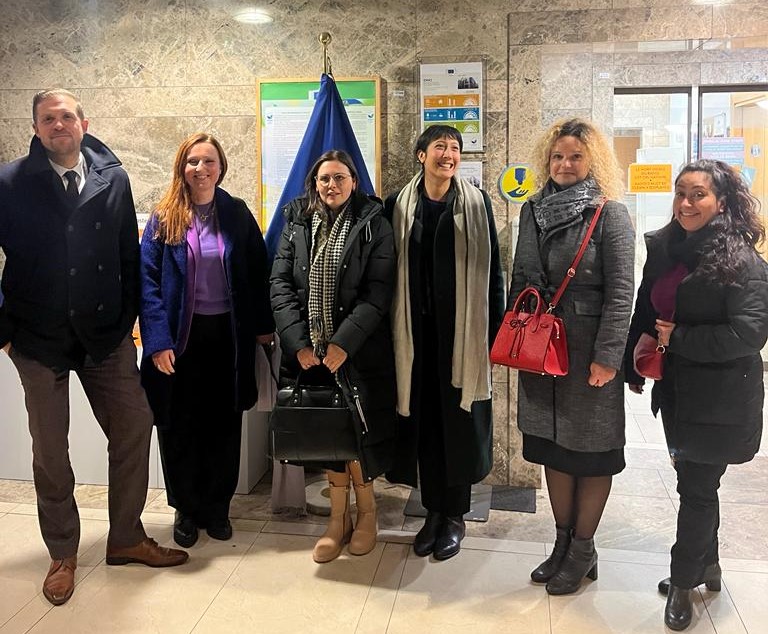
29 November 2023
The diamond value chain : from the Earth’s mantle to your jewel
#4: processing diamonds
In our series on the diamond value chain, from the diamond formation to the ring on your finger, we review the different steps in the complex supply chain of diamonds. In this article, we are going to cover the fourth step: diamond processing
In a previous newsletter, we detailed the extraction process of diamonds and the various methods used depending on the nature of the site. Once the kimberlite ore is successfully mined, it is transported to on-site processing plants where the second mining stage – processing- begins. This stage consists of multistep crushing of the kimberlite ore to reduce it to a manageable size for further processing.
Once mined, the kimberlite ore passes through various processing stages to extract rough diamonds from it. Then, producers sort the ore mechanically, and use various methods such as gravity and dense media separation to cull diamonds from the waste material. Miners today make use of as much automation as possible to minimize labor costs and theft risk.
Next, producers inspect, classify and prepare the diamonds for rough-diamond sales. Antwerp, London and Moscow are the main Centres for the purchase and trade of rough diamonds. These primary sales most often take place within the sightholder system, a system specific to the diamond industry in which a select group of verified buyers are allowed to purchase rough product. Other sales channels include auctions and spot sales.
Today, diamonds are produced in about 20 major mines around the world. The diamond industry is highly concentrated in a few locations, with about 70 % of the world’s diamonds located in Africa and Russia. The other main producing regions are Canada and Australia, both relatively recent entrants.
In the next step, we will learn more about the cutting and polishing process of diamonds.

19 October 2023
Zoom in on the biggest edition of the Romanian Jewelry Week
Earlier this month, the Romanian Jewelry Week (RJW) took place in the city of Bucharest, Romania. Organised by Asssamblage, National Jewelry Association, a member of the European Federation of Jeweller (EFJ), this international event has focus on the contemporary jewellery field in Romania and worldwide since 2020.
The 2023 RJW’s edition was the biggest ever, with over 230 designers, schools and associations coming from more than 30 countries around the world. It included conferences, workshops, seminars, guided tours, fairs and exhibitions supported by professors, experts, artists, curators etc. In addition, to the central exhibition at the Romanian National Library, the guests were also able to wander around the city to discover eight collective exhibitions, schools and renowned international associations, such as the Slovenian Jewellery Week.
This is the third time that the EJF, through its President Bernadette Pinet-Cuoq, has participated in the event, sitting on the jury alongside renowned names such as the Athens Jewelry Museum – Ilias Lalaounis, the Legnica Silver Festival, and many more.
The jury is in charge of selecting the winners of various awards, from the Social Message Award to the Grand Award of Romanian Jewellery Week 2023. The President of the EFJ had the honour to reward Marie Jianu with the Award for Excellence in Technique.
Marie Jianu studied contemporary jewellery at the Assamblage School of Contemporary Jewellery. Three years ago, she started to learn a new technique called “Chassing and Repoussé” which she uses in her current collections. She creates each piece by hand using different types of techniques, preferring fine silver, sterling silver and 14 carat gold as materials. Her unique creation that won her the award is a 6.4 x 6.7 cm cuff rustle in pure and sterling silver. We can truly admire Marie Jianu’s technique and talent through this unique piece of pure beauty!
More information on the Romanian Jewelry Week: here
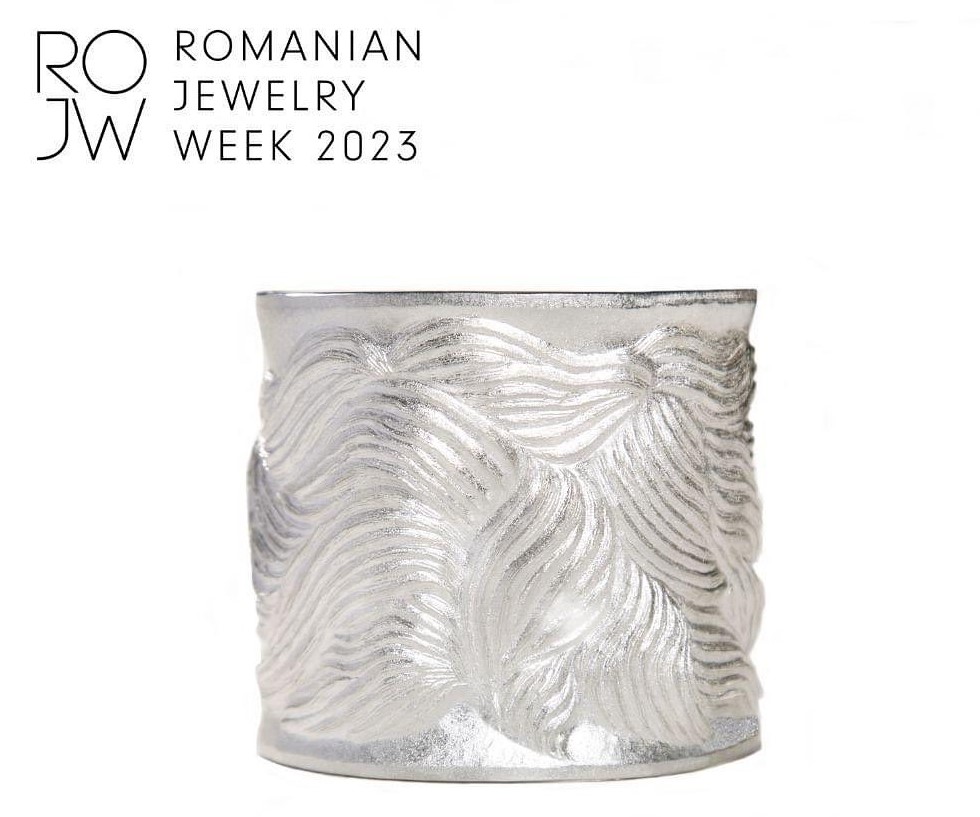
7 September 2023
For an effective single market for jewellery articles
The Federation remains committed to the single market which celebrates its 30th anniversary this year. The single market has brought significant economic benefits and has been responsible for 9% GDP growth since it was created.
However, the European Federation of Jewellery (EFJ) regrets that there are still many obstacles preventing jewellery products from benefiting fully from the free movement of goods within the single market.
Although the introduction of the principle of mutual recognition was a good first step towards the free movement of jewellery products within the EU, in practice it has not been a reality because of the many derogations introduced by the Member States for various reasons, such as the protection of consumer interests. Through these derogations, Member States have introduced further requirements that products legally sold in another EU country must meet.
In order to fully understand the issue and the reasons why the jewellery sector is not yet harmonised, some introduction to jewellery production in Europe is required. Each piece of jewellery usually bears two marks, one identifying the operator (manufacturer/ importer) who first places the goods on the market, and the other indicating the purity/fineness of the precious metal. When the fineness mark is applied by an independent laboratory, it is called a guarantee mark. For historical reasons to which they are deeply attached, Member States have developed their own marks for each precious metal and a specific control system. This means that in practice each Member State has its own national rules (marks, certification, control) and they usually require operators from other Member States to comply with them, if they want to place their products on the market.
As a result, 27 legal systems coexist and regulate the trade in jewellery products, making the situation burdensome and slowing down the jewellery trade within Europe.
The EFJ therefore calls on the European Commission to adopt a legislative proposal aimed at harmonising national legislations on articles of precious metals in order to finally ensure the free movement of jewellery products.
This will reduce the current direct and indirect costs faced by operators. Harmonisation will also lead to more guarantees for consumers, more clarity for operators and fair competition.
More information in our position paper.
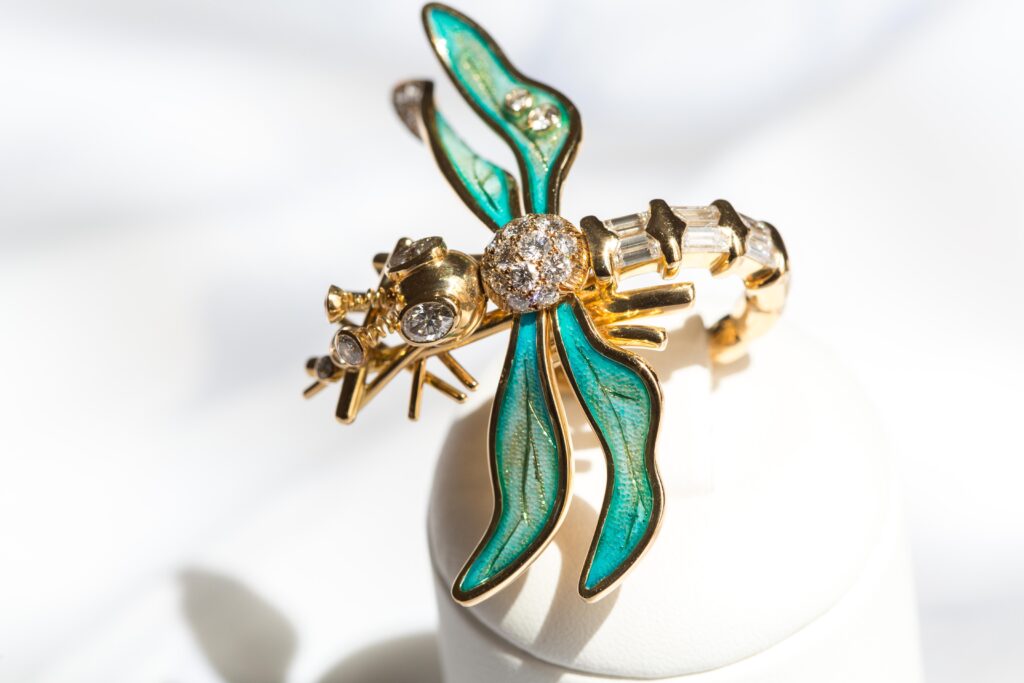
28 June 2023
10 years of the European jewellery sector’s interests well in hand!
“Born out of a desire to strengthen the presence of the jewellery sector within the European institutions, the European Federation of Jewellery (EFJ) is celebrating its tenth anniversary in 2023.
The Federation brings together the national federations of France (UFBJOP), Italy (Federorafi – Federazione nazionale orafi argentieri gioiellieri fabbricanti), Spain (AEJPR – Asociación española de joyeros, plateros y relojeros), Portugal (AORP – Associação de Ourivesaria e Relojoaria de Portugal), Belgium (Ars Nobilis and AWDC), and Romania (Assamblage).
Through its effective actions and its concerted approach to promoting the jewellery industry, the EFJ has become a point of reference for European decision-makers. The Federation has taken on many different and important issues for the sector, including mutual recognition of hallmarks, harmonisation of cash payment ceilings, customs codes to distinguish synthetic diamonds from natural diamonds, diamond terminology, due diligence, and more. The Federation has participated in numerous meetings with Members of the European Parliament and representatives of the European Commission, always attentive to the concerns of the industry. The commitment of our members, the cooperation with the Natural Diamond Council, and the constructive work carried out with Aliénor have also been key to our achievements.
All of this work fully contributes to protecting consumers, maintaining a fair level of competitiveness between the sector’s players, and to promoting responsible practices in order to ensure ethical and sustainable supply chains. I am therefore proud of the actions accomplished and the successes achieved thanks to our members’ involvement and the dynamism of the sector we represent.”
Bernadette Pinet-Cuoq, President of the European Federation of Jewellery

17 May 2023
The European Federation of Jewellery celebrates its 10th anniversary at the General Assembly in Arezzo, Italy
On the occasion of the General Assembly in Arezzo, the members of the European Federation of Jewellery appointed two new executive Vice-Presidents from France and Italy. After 10 years of existence and many challenges taken up, this Vice-Presidency from two founding members will give a new political momentum while maintaining continuity in the actions of the Federation.
“The 10th anniversary of our Federation is an opportunity to celebrate what we have achieved so far. The valuable cooperation established over the years and the strong commitment of all the members to the pursuit of our European common interests have enabled us to strengthen the EFJ’s position on the European scene.” said Bernadette Pinet Cuoq, President of the EFJ, while introducing the meeting.
She added that “the following 10 years will be even more dynamic with the support and key role of the two new executive Vice-Presidents from France and Italy.”
The EFJ members warmly thanked the Founder and current President of the Federation: Ms Pinet Cuoq. Her forward-looking approach and continued commitment have allowed the European jewellery sector to work together in a cohesive manner and have made the EFJ a key and recognised stakeholder among the EU institutions.
The EFJ members rejoiced at the current positive economic outlook. Each member confirmed that the year 2022 continued the economic recovery that had begun in 2021. For example, in France, there was a +31% growth in 2022 compared to 2021, in Italy, the year 2022 registered a record turnover of 11 billion € (for imports and exports) and in Portugal, production increased by 10% in 2022 compared to 2021. However, skilled workers are still very hard to find.
Regarding European policy, the members regretted that the European jewellery sector does not benefit from the free circulation of products yet, as several obstacles remain within intra-EU trade for articles made from precious metals. This is the reason why the EFJ decided to launch a work aiming to provide detailed information and data on the current barriers to trade, as well as the solutions to ensure an effective single market for jewellery articles.
The Federation also reaffirmed the importance of having an ethical and responsible business conduct in the supply chain of the jewellery sector. The sector is already subject to the European legislation on the sourcing of diamonds and minerals, and relies on industry-driven certification schemes, such as the Responsible Jewellery Council’s Code of Practices, to support their due diligence practices. In this regard, the Federation has been closely following the discussions on the directive proposal on “Corporate Sustainability Due Diligence” and calls for the future legislation to rely on and be consistent with the existing requirements in place for the sector, while adapting the burden on companies to the size and resources available.
Furthermore, the EFJ remains more than ever committed to achieving the introduction of a Union-wide limit for large cash payments to ensure a more harmonised and functional single market, as well as to fighting against misleading and fraudulent advertising practices, which undermines consumer protection when purchasing natural diamonds.
Following the General Assembly, the members had the opportunity to visit the rich “Museum Orodautore” that combines Arezzo’s goldsmith tradition with the originality of contemporary art. A stunning visit to the opening of the international jewellery exhibition Oroarezzo also took place the next day. This fair presents every year all the excellence of Made in Italy production, with companies specialising in gold and silverware reflecting all the Italian know-how, creativity and innovation. The EFJ members were enchanted by the warm hospitality and excellent organisation of the hosts, the FEDERORAFI team, and they are looking forward to the next gathering.

7 April 2023
Two essential legislative breakthroughs for the European Federation of Jewellery but more still needs to be achieved
Recently, two important legislative progress have been made regarding green claims and cash payments ceilings. Those two topics are of critical importance for the European Federation of Jewellery (EFJ).
Last week, the European Parliament Committee on Economic and Monetary Affairs (ECON) and the Committee on Liberties, Justice and Home Affairs (LIBE) adopted their position on the proposed regulation on “The prevention of the use of the financial system for the purpose of money laundering or terrorist-financing.” Over the last years, the EFJ has been advocating for the establishment of an EU harmonised cash payment ceiling of 10.000€ in business-to-consumers transactions. Multiple benefits could come from such initiative: a more efficient fight against money-laundering and better level playing field in the internal market. Such cash payments ceiling proved to be vital for the jewellery sector in some countries. For instance, the Belgian jewellery sector tends to lose up to 30% of revenues due to unlimited cash payments ceilings in neighbouring countries. Although a full harmonisation will not be achieved since Member States will have the possibility to adopt lower limits, the EFJ welcomes the outcome of the vote since both Committees agreed on establishing a more harmonised ceiling (7.000€)for persons trading in goods or providing services.
Last week was eventful because the European Parliament Committee on Internal Market and Consumer Protection (IMCO) adopted the report on “Empowering consumers for the green transition through better protection against unfair practices and better information.” The EFJ welcomes the broader list of generic environmental claims which must provide evidence of their excellent environmental performance to be used. We hope that such progress will decrease misleading commercial practices on synthetic diamonds providing consumers with an informed choice. Although synthetic and natural diamonds share the same physical and chemical characteristics, they are different products with a completely different value. While the first ones are artificial replicas produced in an industrial and standardised way, natural diamonds are the unique creation of the Earth. Inaccurate green claims on synthetic diamonds often deceive consumers. This regulation comes therefore at the right time to tackle greenwashing on this product. The EFJ welcomes this text as a first good step, but to truly and effectively protect consumers against misleading and fraudulent advertising practices, only a European legally binding definition on diamond terminology could achieve proper consumers protection.
Both legislative breakthroughs have to be voted in the Plenary at the European Parliament in April before heading to trialogues so that the Parliament and the Council can agree on the final texts. The EFJ remains therefore mobilised!

21 February 2023
The jewellery and watchmaking sectors collectively commit to achieving greater sustainability
Initiated by Kering and Cartier, the Watch and Jewellery Initiative 2030 (WJI2030) brings together actors from the watch and jewellery sectors who wish to achieve lasting positive environmental and social impact. The twenty-four members that currently make up this global initiative share a common ambition: to ensure that their industries are fully sustainable. To this end, the movement has set itself three main objectives in line with the 10 principles of the United Nations Global Compact and the 17 Sustainable Development Goals:
- Build climate resilience by prioritising measures to reduce GHG emissions in line with the 1.5°C pathway by 2030 and net zero by 2050.
- Preserve natural resources by ensuring the positive impact of industries on biodiversity and communities.
- Foster inclusivity throughout the value chain using UN Guiding Principles on Business and Human Rights and OECD due diligence guidance.
As a group, all Watch & Jewellery Initiative 2030 members will work collectively to define a minimum commitment for each pillar. Joined in December by the Union Française de la Bijouterie (UFBJOP), a founding member of the European Federation of Jewellery, the WJI2030 aims to bring together as many stakeholders as possible to collectively empower the sector. While watch and jewellery manufacturers are the main ones concerned, stakeholders along the value chain, non-profit, cultural, trade organisations, governmental bodies, financial institutions, and academics are also more than welcome to take fully part in the movement.
For further information, you can access the WJI2030 website here.

10 January 2023
Welcome to Assamblage, the Romanian jewellery association!
The EFJ is glad to welcome Assamblage, the Romanian National Association of Contemporary Jewellery Authors and Designers. Assamblage joins the 6 members of the Federation: UFBJOP (FR), AORP (PT), AWDC (BE), Ars Nobilis (BE), Federorafi (IT) and AEJPR (ES). Together, we will continue to defend our position on essential topics for the sector at European level: harmonisation of cash payments limits, diamond terminology, due diligence and mutual recognition/ harmonisation of marketing rules.
Launched in May 2015, Assamblage is a non-governmental organisation. It strives for the recognition and endorsement of jewellery as a self-reliant form of art and also for the visibility growth of designers inside the artistic community, the media and the general public, both at national and international level. Assamblage aims to represent the general interests of the Romanian sector, and to support, develop and structure the surfacing field of contemporary jewellery.
Assamblage is currently the Romania’s main and most active platform dedicated to author jewellery, upholding its contribution to the exponential growth of activity in the field of jewellery design, while maintaining a strong bond with adjacent fields, such as architecture, product design, fashion industry and visual arts.

29 November 2022
Fascinating behind-the-scenes tour of the diamond sector during the EFJ Board meeting in Antwerp
For the second time this year, the EFJ members had the pleasure to meet in person for the Board Meeting in Antwerp. This gave the opportunity to exchange views on the fast-paced and busy European legislative activity, as well as to enjoy a behind-the-scenes visit of the diamond sector.
“I would like to thank you all for your active participation and continued commitment to our sector and the EFJ. The fact that Romania has decided to join us in 2023 is a very positive signal since it will reinforce our federation and its influence.” said Bernadette Pinet Cuoq, President of the EFJ, in her welcome speech.
With respect to the economic situation, the recovery trend is confirmed in 2022, in line with 2021, with significant growth in several countries. However, rising energy prices could put a brake on this upturn. At the same time, difficulties in finding skilled craftsmen continue, prompting the EFJ members to set up inter-EU cooperation strategies.
While the discussions on due diligence are moving forward at EU level, the EFJ members stressed once again the need for the future legislation to be proportional, meaning that it should adapt the burden of compliance costs to the size and resources of companies. In other words, while the Federation believes that an EU-wide cross-sectorial legal framework on due diligence has the potential to significantly influence the way EU businesses will conduct their operations in the future, the new rules have to be pragmatic, implementable and they need to take into account the specificities of the jewellery sector.
On diamond terminology, the members welcomed the latest Belgian legislation that will reinforce consumer protection at national level, requiring retailers to provide accurate information in a precontractual document to be delivered before the purchase of the gem. Moreover, the members are looking forward to analysing the forthcoming legislative proposal on “green claims,” since it has the potential to help the sector getting rid of practices aiming at promoting synthetic diamonds in a misleading way.
Negotiations on the European Commission’s proposal to introduce a Union-wide limit for large cash payments of 10.000€ are coming to an end. The Federation stressed the importance for the European Parliament and the Council of the EU to support this new ceiling toensure a more harmonised and functional single market.
Mrs Pinet Cuoq concluded the Board meeting by warmly thanking the AWDC team, host of the event, for the impeccable organisation of the day, as well as for the very informative visits of the diamond sector. All EFJ members will hold their next General Assembly in Arezzo (Italy) in 2023 on the occasion of the fascinating International Jewellery Show: Oroarezzo.
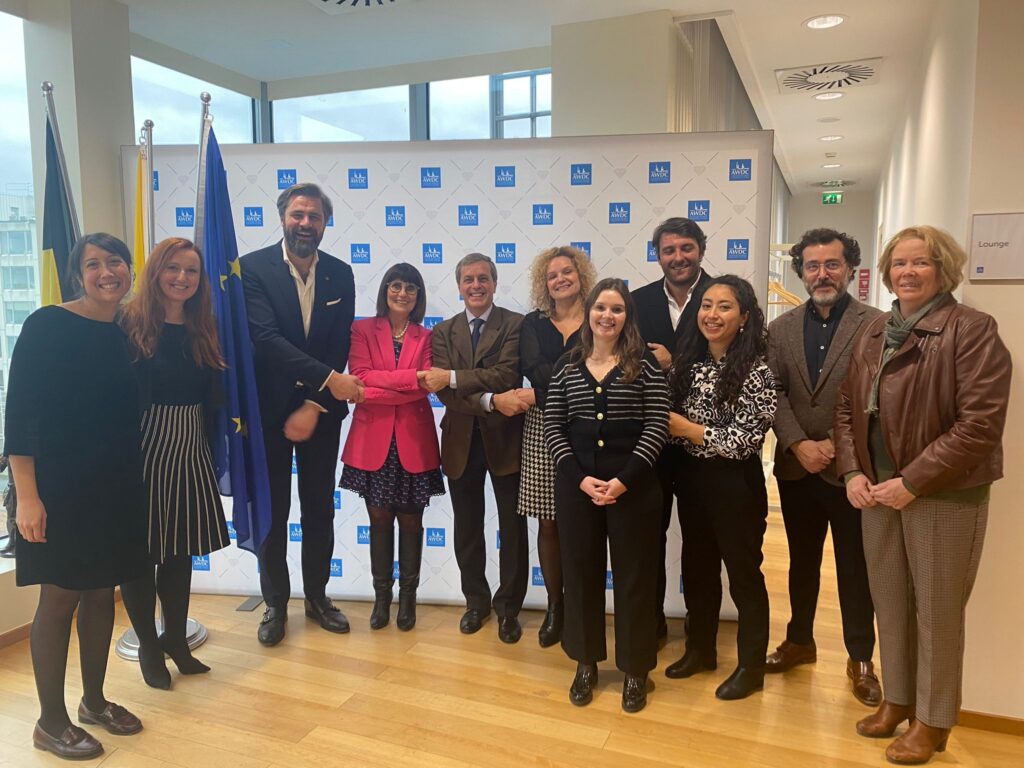
4 October 2022
The EFJ supports a cross-sectorial framework on due diligence that is pragmatic and implementable
On the 23rd of February, the European Commission published a proposal for a Directive on Corporate Sustainability Due Diligence (CSDD). It is now being discussed by the co-legislators. As regards the Council, the Czech Presidency is willing to conduct the bulk of the discussions during their mandate (from the 1st of July until the 31st of December 2022). In the European Parliament, the draft report from the rapporteur of the lead Committee on Legal Affairs (JURI), Ms Lara Wolters, will be released by the end of October. Debates will follow within the JURI Committee, in cooperation with five associated Committees on Foreign Affairs; Environment, Public Health and Food Safety; Economic and Monetary Affairs; International Trade and Employment and Social Affairs.
In this context, the European Federation of Jewellery released its position on this important matter.
The EFJ believes that an EU-wide cross-sectorial legal framework on due diligence has the potential to significantly influence the way EU businesses will conduct their operations in the future and will define an ambitious threshold for countries and companies globally. However, the new rules have to be pragmatic, implementable and they need to take into account the specificities of the jewellery sector. Given that the European jewellery and diamond sector is fragmented and consists mainly of SMEs, the EFJ advocates for the adoption of an EU legislation that would:
- Establish a proportional approach which adapts the burden of the compliance costs to the size and resources of the companies.
- Set up an appropriate support mechanism to help targeted companies comply with the rules, as well as SMEs that are indirectly affected.
- Base the due diligence system on an obligation of means rather than an obligation of results.
- Take into account the existing legislation/certification schemes in the jewellery and diamond sector to ensure consistency.
- Ensure legal certainty for companies with clear definitions of the risks and duties.
- Guarantee a level-playing field for EU companies at EU and international level to support EU competitiveness.
The Federation will continue to be fully involved, active and a source of proposals in the decision-making process.
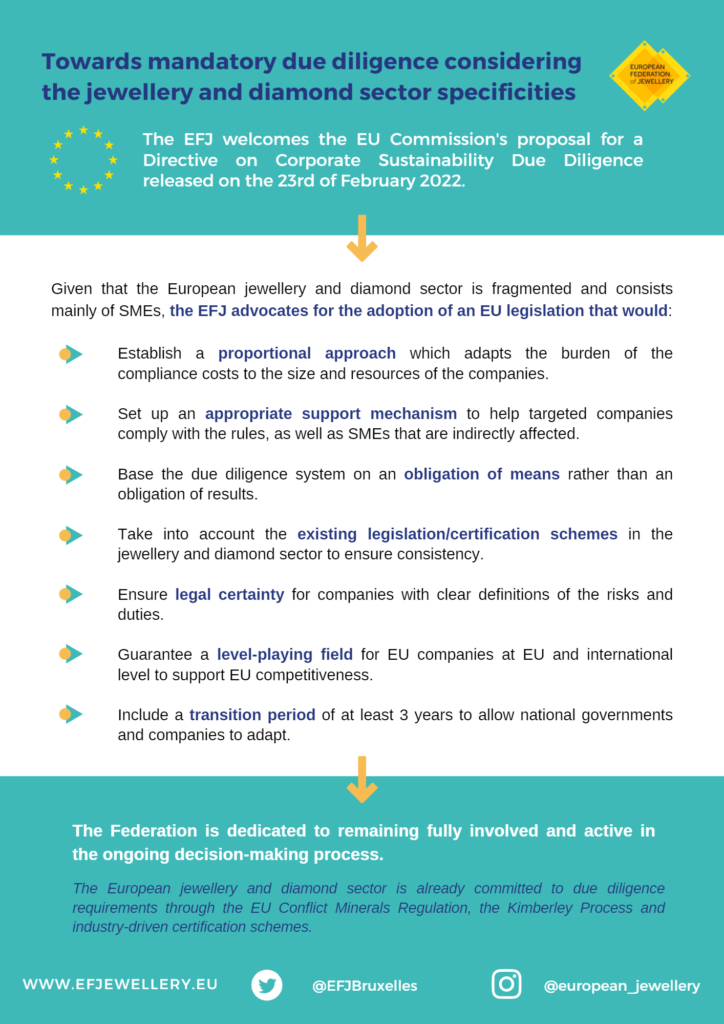
05 July 2022
Constructive discussions on EU matters in a friendly atmosphere
Another successful General Assembly of the EFJ
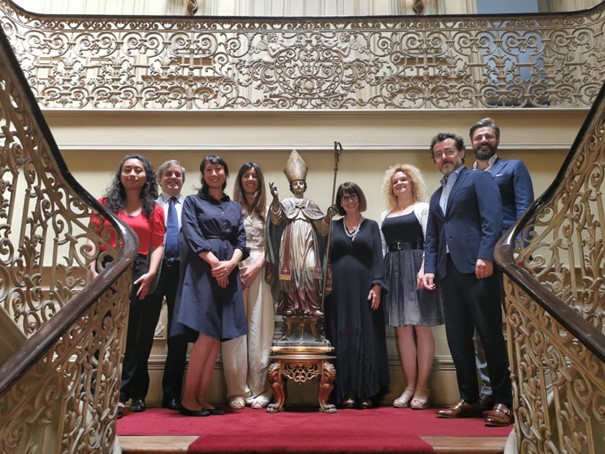
The members of the European Federation of Jewellery (EFJ) had the pleasure to meet again in Porto on the 28th of June for the General Assembly in order to debate the latest EU policy developments and discover the specificities of the jewellery sector in Portugal.
After a difficult market situation in 2020 due to COVID related confinements, the year 2021 proved to be a positive one. Most member countries were able to reach the economic levels of 2019, or even exceed them in some cases. However, there is currently a shortage of skilled labour and craftsmen in most countries, requiring the implementation of new training strategies.
When it comes to EU policy developments, various topics were on the table, notably the need for a clear diamond terminology. While the Federation welcomed the European Commission’s proposed Directive on Empowering consumers for the green transition, it will carefully analyse the upcoming legislative proposal on “green claims” and its potential to help the sector getting rid of practices aiming at promoting synthetic diamonds in a misleading way.
The EFJ also welcomed the legislative proposal on Corporate Sustainability Due Diligence (CSDD) whose objective is to foster sustainable and responsible corporate behaviour throughout global value chains. Nevertheless, the Federation will closely follow all policy developments to ensure that the future legislation takes into account the specificities of the European jewellery sector, a sector mainly composed of SMEs, with limited human and financial resources.
Furthermore, the EFJ reiterated its support to the proposal of the European Commission to introduce a Union-wide limit for large cash payments of 10.000€,as this will prevent market distortion and unfair competition between operators in different Member States. Therefore, the Federation will keep calling on the European Parliament and the Council of the EU to approve this new ceiling and to add a provision ensuring the equal treatment of European citizens by putting an end to the existence of different limits between national residents and non-residents.
While the members agreed that the training from the European Commission on mutual recognition of precious metals, that took place on the 5th of May, was relevant and useful, they are now considering the opportunity to explore the avenue of harmonisation of precious metals to ensure an effective free circulation of jewellery products within the EU.
The members also had the opportunity to visit the school of CINDOR (centre of professional training for jewellery and watchmaking), the workshops of the famous jewellery family business Alcino and the museum of the house of filigree.
At the end of the General Assembly, Bernadette Pinet Cuoq, President of the EFJ, warmly thanked the AORP team, hosts of the event, for their full availability and strong sense of Portuguese conviviality. She also expressed her gratitude to all the EFJ members for their involvement, reaffirming that “the EJF is a forward-looking organisation built on strong foundations”.
8 June 2022
Misleading commercial practices on synthetic diamonds must cease
On 27 May, the EFJ sent its contribution to the EU Commission’s public consultation on the proposed Directive on Empowering consumers for the green transition through better protection against unfair practices and better information.
The Federation fully supports the objective to reinforce the protection of consumers against unfair and misleading commercial practices that prevent them from making sustainable consumption choices. The Federation also applauds the proposed ban of generic environmental claims used in marketing towards consumers, where the excellent environmental performance of the product or trader cannot be demonstrated.
In particular, the EFJ hopes that all proposed measures will contribute to decreasing misleading commercial practices on synthetic diamonds. The Federation acknowledges the legitimacy of both natural and synthetic diamonds but considers them to be different products. Even if they have the same physical and chemical characteristics, they are produced in a different way and they do not have the same value, both financially and symbolically. Synthetic diamonds are artificial replicas produced in an industrial and standardised way while natural diamonds are a unique creation of the Earth. Therefore, consumers have to be duly informed about what they buy in order to make informed choices and not to be victims of fraudulent practices.
Generic environmental claims such as ecological or sustainable are increasingly used to designate and promote synthetic diamonds. In reality, it is estimated that synthetic diamonds have a negative environmental impact that is 69% higher than natural diamonds on average mainly due to high emission and energy consumption levels.
Furthermore, some sellers claim that synthetic diamonds are more ethical. This is another misleading and false advertising practice since the natural diamond sector plays a key economic and social role in providing livelihoods to around 10 million people mainly in Africa and in India. It should also be stressed that thanks to the Kimberley Process (KP), 99,8% of the global supply of rough diamonds are traded by KP participants, including the EU, ensuring that they do not contribute to the fuelling of armed conflicts. And last but not least, the 7 largest producers of natural diamonds provide a global net benefit of more than 16 billion USD, infusing more than 6.8 billion USD into local businesses in diamond mining communities and 292 million USD into infrastructure and social programmes in those same communities. Although the Federation considers that the proposed Directive is a step in the right direction, it is however insufficient to properly and effectively protect consumers. After the first recognition by the EU Commission of the issue of diamond terminology in the EU Guidance document of the Directive on Unfair commercial practices, released in December 2021, the EFJ is convinced that only the adoption of a European legal (or legally binding) definition of diamond inspired by the French and Belgian legislations designed to differentiate natural from synthetic diamonds by clearly disclosing their respective core characteristics and origin and by defining the terminology of each product, will allow to efficiently protect consumers.
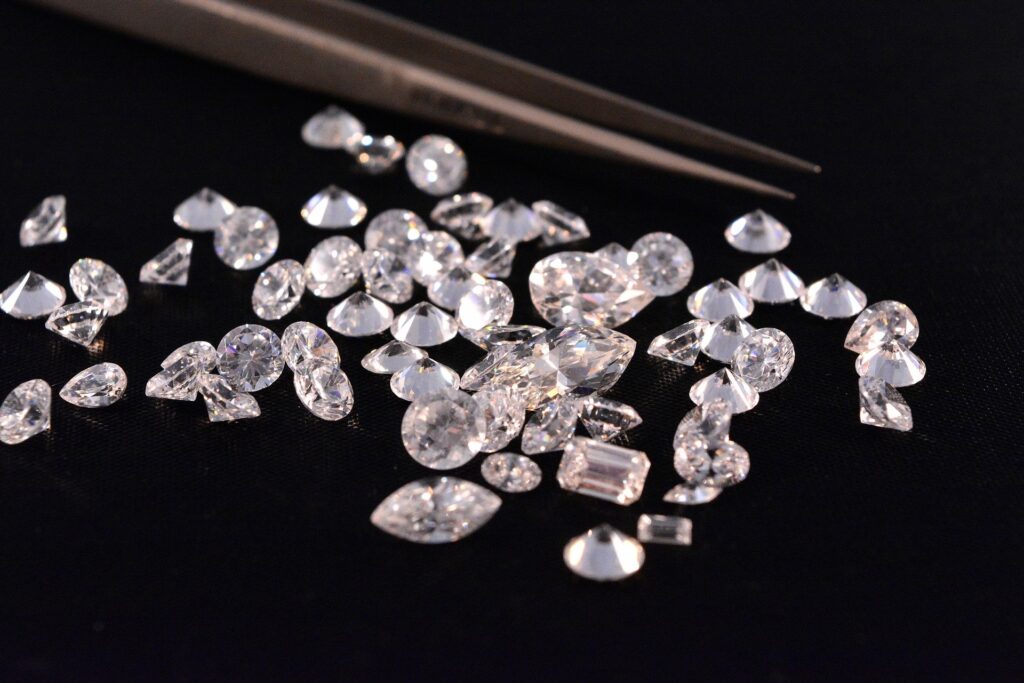
1 June 2022
The diamond value chain: from the Earth’s mantle to your jewel
#3: extracting diamonds
We started a series on the diamond value chain, from the diamond formation to the ring on your finger. In this newsletter, we will cover the third step: diamond extraction.
In our previous newsletter, we detailed the exploration process to find diamond deposits. Once such a deposit has been identified, various methods are used to extract the precious stones, depending on the nature of the site.
If the diamonds are found underground, two processes can be used to extract them: open-pit or underground mining. Open-pit mining starts with removing the layers of sand and rock above the kimberlite pipe1. Afterwards, miners will blast the diamond-bearing rock in the pit, which will then be transported to a diamond processing plant. In underground mining, workers dig tunnels to the kimberlite pipe. They construct a first tunnel above another one, with funnels connecting the two. They blast the ore in the upper tunnel, and collect it in the second, lower one. The ore is then loaded and brought back to the surface for processing2.
Alluvial mining occurs in riverbeds and beaches. As a small-scale artisanal activity, it consists of panning through gravel to find the precious stones. However, it can become much more complex at an industrial level, with diverting water and removing material to get to the gravel bed. The gravel is then taken to a plant where it is washed and screened for diamonds.
Diamonds can also be found in seabeds, hundreds of meters below sea level, and collected through marine mining. Specialised ships mine for diamonds deep out at sea. These ships use a powerful crawler that sucks gravel from the seafloor up to the surface through flexible pipes. Alternatively, they use a large, ship-mounted drill to excavate diamonds3.
In the next step, we will learn more about the processing of diamonds from the collected ore.

[1] Kimberlite pipes are vertical, cone-shaped structures, formed by deep-source volcanic eruptions, carrying the diamonds from the Earth’s mantle to its surface.
[2] Source: https://www.capetowndiamondmuseum.org/about-diamonds/diamond-mining/
[3] Idem
20 May 2022
EFJ’s reaction to the Commission’s directive proposal on Due Diligence
On 20 May, the European Federation of Jewellery (EFJ) sent its contribution to the Commission’s public consultation on the Directive proposal on Corporate Sustainability Due Diligence.
The Federation welcomes this proposal, which includes a proportionate approach regarding SMEs. However, it added some remarks/points of attention for the sector:
- Effective supporting and financial measures are needed for SMEs, when indirectly impacted as a result of the effect of large companies’ actions across their value chains.
- It is essential to avoid the passing on of the burden from large companies to the smaller suppliers in the value chain.
- Companies should be able to rely on already existing industry-driven certification schemes, such as the RJC and the World Diamond Council’s renewed System of Warranties, to support the implementation of their due diligence obligations.
- It is essential to avoid any duplication and/or fragmentation of legal requirements.
- The Directive should focus on positively triggering and motivating companies to implement their due diligence obligations, instead of sanctioning them at first stage in case of non-compliance.
Furthermore, we are satisfied with the fact that the proposed framework on due diligence is based on an obligation of means rather than an obligation of results. Having an exhaustive list of all the different legislations that companies have to consider in order to identify, bring to an end, prevent, mitigate and account for adverse human rights and environmental impacts in an Annex of the Directive provides for further legal certainty.
Finally, the EFJ fully agrees that third-country companies, which are not established in the EU but carry out activities on the European territory, are also covered by the Directive proposal.
Read our full contribution here

18 March 2022
The EFJ calls for the same cash payment limit between residents and non-residents
To date, the EU does not have a harmonised cash payment limit. This means that, depending on the Member State, the limit can be more or less low or there can be no limit at all. For example, in Greece and Italy, citizens can pay their purchase with a maximum of 500€ and 1000€ in cash respectively. In other countries, such as Germany, Ireland, Austria or Finland, there is no limit related to cash payments.
Moreover, cash restriction limits sometimes differ within a Member State between residents and non-residents. This contributes to creating unjustified discriminations and uncertain situations among EU citizens.
On 20 July 2021, the European Commission proposed the introduction of a Union-wide limit for large cash payments of 10.000€ while leaving the possibility to Member States to adopt lower ceilings and stricter provisions.
The EFJ calls on the EU Parliament and the EU Council to add in the final legislative text on the prevention of the use of the financial system for the purposes of money laundering and terrorist financing that Member States cannot introduce different ceilings for national residents and non-national residents. The Federation also supports the 10.000€ proposed limit in business to consumers transactions.
More information in our position paper and in our infographic.

26 January
Welcome back to the AEJPR, the Spanish representative of the sector
The EFJ is glad to welcome back the Asociación Española de Joyeros, Plateros y Relojeros (AEJPR), the Spanish Association of Jewellers, Silversmiths and Watchmakers. The AEJPR joins the 5 members of the Federation: the UFBJOP (FR), the AORP (PT), the AWDC (BE), Ars Nobilis (BE) and Federorafi (IT). Together, we will continue to defend our position on essential topics for the sector at the European level: cash payments limit, mutual recognition, diamond terminology and due diligence.
The AEJPR was founded in 1977 to represent the general interests of the Spanish jewellery, silverware and watchmaking sector. The Association is active in various thematics, such as the fight against money laundering and delinquency or trade.
In total, the Spanish sector is composed of 8.490 companies, 6.200 points of sale, 1.490 micro-workshops including repairers, 400 factories and 400 distributors. The Association represents 58% of these actors, i.e. more than 9.800 entities with activities in industrial or artisanal production, in import and export, in wholesale distribution or specialised retail trade of jewellery, silverware and watches.

22 December 2021
The European Commission recognises the importance of diamond terminology
The European Federation of Jewellery is glad that the revised Guidance Document on the Unfair Commercial Practices Directive, recently published by the European Commission, now includes a reference to the issue of diamond terminology. In its text, the Commission recognises that diamonds are complex goods which require additional information to be communicated to the consumer:
“Information about the main characteristics for goods may already be available from their appearance, packaging or labelling that the consumer can consult at the time of sale. More complex goods may require the communication of additional information – on the product description tags in the shop or on online pages – to establish their main characteristics.
Those latter product’s characteristics and restrictive conditions that the average consumers will not normally expect from the given category or kind of product must in particular be communicated to the consumer as those are especially likely to affect their transactional decisions. Such characteristics could be, for example, the limitation of the duration or of the nature and performance of a service (e.g. whether a ‘fibre’ internet service is ‘fibre-to-the-home’ or another type) or a particular composition or specification of goods (e.g. the synthetic origin of precious stones such as diamonds).”
Indeed, a buyer cannot tell by the eye if a diamond is a natural one, formed deep within the Earth’s crust 1 to 3 billion years ago or a synthetic one, man-made in a laboratory. Therefore, the characteristics of each diamond should be specified and confusing terms such as “cultured” or “genuine” should be banned.
In order to protect consumers against misleading and fraudulent advertising practices, the EFJ advocates for the adoption of an EU legal (or legally binding) definition that would:
- define the characteristics of a natural and synthetic diamond and the fundamental differences between them.
- oblige the trade to accurately inform consumers, by means of a certificate, about the jewellery product they are purchasing.
For more information on diamond terminology, please read our position paper or consult our infographic.

30 November 2021
The EFJ met in Paris for a very constructive Board meeting
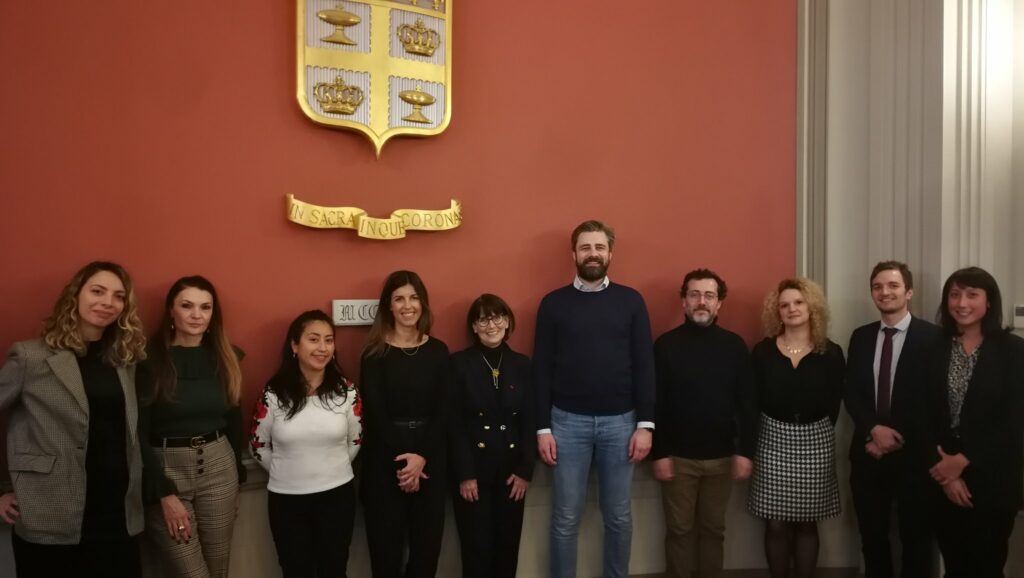
The European Federation of Jewellery was glad to organise its first physical meeting since the beginning of the pandemic. The members gathered for their annual Board Meeting at the UFBJOP’s (Union française de la bijouterie, joaillerie, orfèvrerie, des pierres et des perles) headquarters in the centre of Paris.
Bernadette Pinet-Cuoq opened the discussions by stating: “We are convinced that Europe is the future of our profession. Our work at the EFJ is crucial for the sector.” She added to be glad to gather the EFJ members for this important meeting, and welcomed the presence of Assamblage, the Romanian Jewellery Association.
The Federation focuses at present its work on four topics, currently on the EU political agenda: cash payments, mutual recognition of goods, due diligence and diamond terminology.
Regarding the economic situation, all members saw a great increase in manufactured jewellery items and sales compared to last year. The results reported in each country were very positive for the sector, and sometimes even higher than pre-covid levels.
The meeting was followed by a visit of the “Haute Ecole de Joaillerie” (High Jewellery Academy), the oldest jewellery school in the world, which was founded in 1867. The members could discover the various trainings given at the French institution. The members got also the chance to visit the “Laboratoire Français de Gemmologie” (French Laboratory of Gemmology), where 5000 reports on precious stones are issued per year.
23 November 2021
Our November newsletter is out! Here is what you can find in this edition:
- Our contribution to the public consultation on anti-money laundering
- The 2019 European jewellery statistics
- The Award for Excellence in Technique we delivered to Gayane Avetisyan at the Romanian Jewellery Week
- The results of a recent French survey on synthetic diamonds
- Diamond exploration
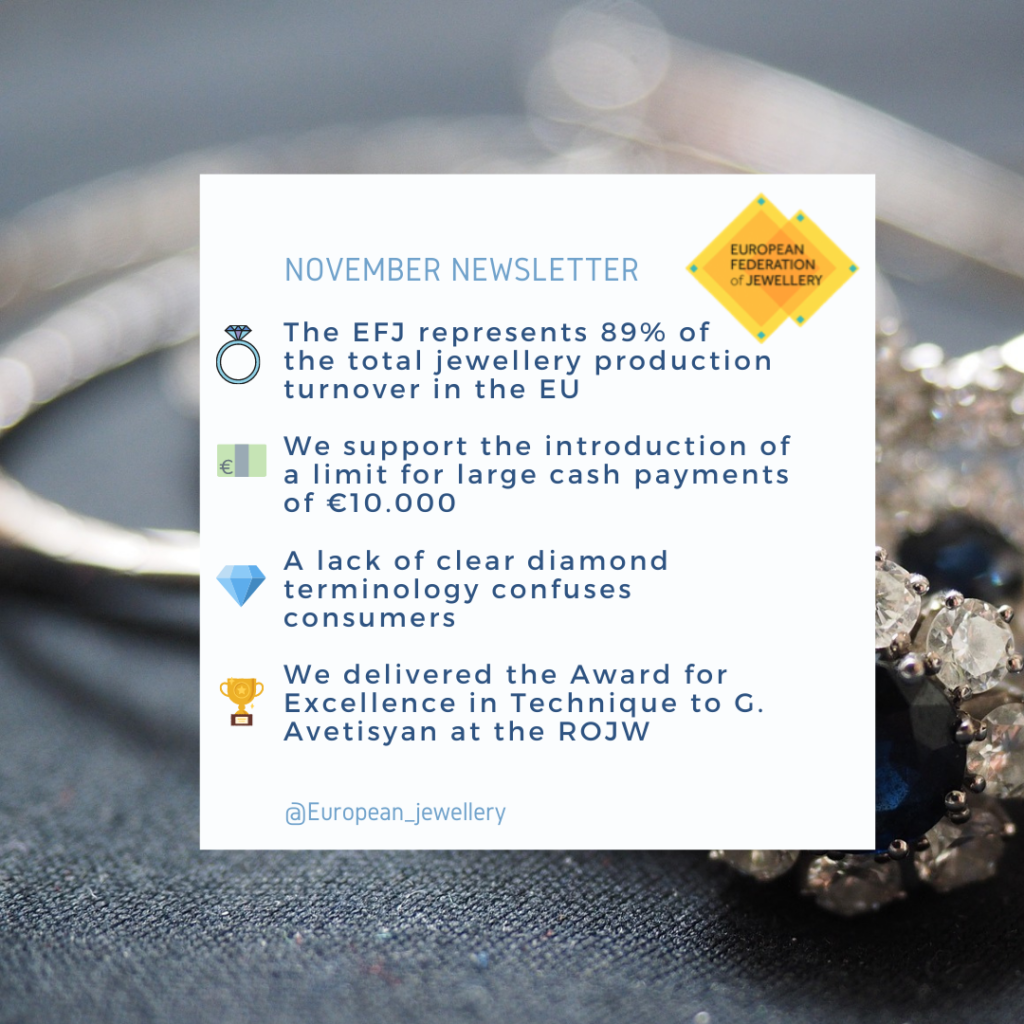
22 November 2021
The diamond value chain: from the Earth’s mantle to your jewel
#2: In search of diamonds
We started a new series on the diamond value chain, from the diamond formation to the ring on your finger. In this article, we will cover the second step: diamond exploration.
As explained in our last newsletter, diamonds are formed deep within the Earth, far from civilization. However, nature has a habit of bringing these precious stones within human reach. Diamonds are in fact transported through vertical, cone-shaped structures called “kimberlite pipes”, named after the town in South-Africa where they were first discovered: Kimberley. These pipes were formed by deep-source volcanic eruptions and carried the diamonds from the Earth’s mantle to its surface. Diamonds can now be found on most continents.
When kimberlite pipes are eroded by the wind, rain, or water currents, diamonds can be carried downstream to beaches and riverbeds. There they can be collected relatively easily through alluvial mining without having to dig deep down. Finally, diamonds can also be located in the depths of the oceans, through kimberlite pipes or carried by rivers downstream.
Diamond producers will carefully seek out and evaluate sites where they can set up new mines to extract the precious stones, whether in rivers (alluvial mining), oceans (marine mining) or in kimberlite pipes (pipe mining).

17 November 2021
The EFJ supports the introduction of a limit for large cash payments of 10.000€
In the wake of the publication in July 2021 of its legislative package on preventing money laundering and terrorism financing, the European Commission launched a public consultation aiming to gather stakeholders’ views about the proposals.
The EFJ answered this public consultation on 17 November, stating its support for an Union-wide limit for large cash payments of 10.000€. The sector considers that it is a proportional and reasonable figure, which takes into consideration the different necessities and sensibilities of EU citizens. Moreover, the Federation welcomes the possibility left to Member States to adopt lower ceilings and stricter provisions.
Indeed, the jewellery sector is significantly economically impacted by the current situation where the ceilings largely differ from one country to another and with some Member States having no limit at all.

The EFJ represents 89% of the total jewellery production sales in the EU
16 November 2021
The 2019 statistics are out, here are some important data:
- The EFJ members (Italy, France, Portugal and Belgium) exported almost €30.000 million, which represents 87% of the European jewellery exports. They generated €11.243 million in production sales, 89% of the EU’s total.
- The EU has a positive balance of trade of €1,97 million with its imports valued at €32,03 million and its exports at €34 million.
- The European Union counts 27.569 jewellery production companies, employing 59.451 people. This means that in average each company has 2 employees.
- Concerning the jewellery retail sector, the EFJ members gather 22.776 retail companies (Belgian diamond sector excluded), with a total of 69.714 employees.
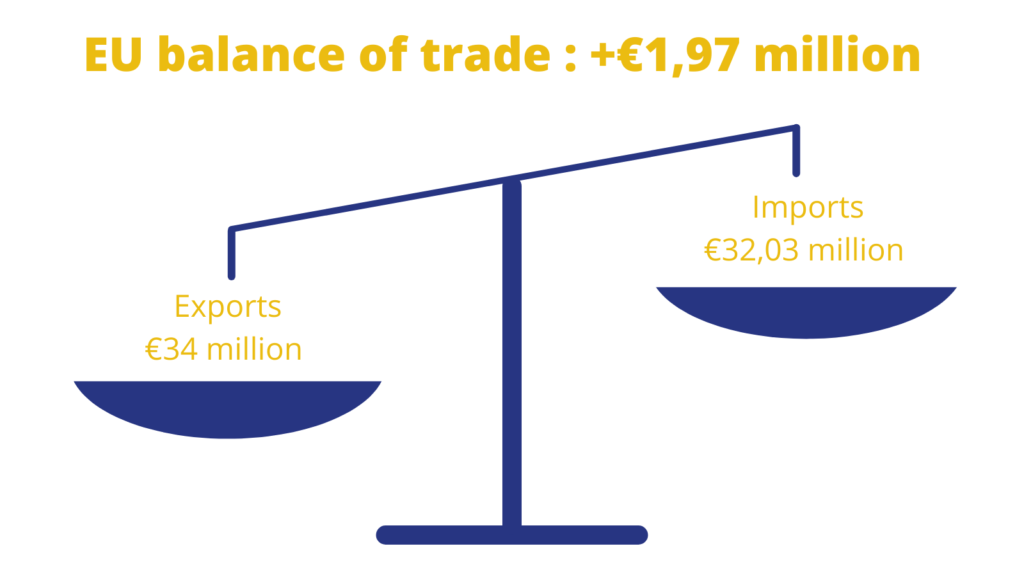
8 November 2021
What role does sustainability play in diamond purchases?
The international diamond corporation De Beers Group published its Diamond Insight Report 2021 entitled ‘Sustainability: shaping the future of the diamond sector’.
The report is based on a survey conducted among more than 8.400 consumers in seven key diamonds markets globally (USA, China, India, France, Italy, UK and South Africa).
Here are some important findings from this 59 pages report:
- One third of consumers value sustainability the most (above price and design) when choosing a natural diamond
- Young consumers are driving the demand for more sustainability in the jewellery sector
- Jewellery is the third products category most frequently purchased on the basis of sustainability considerations (after food and clothing)
- More than half of the surveyed consumers said they would pay their diamond a higher price (10-20%) for a socially and environmentally sustainable brand.
Read more on the essential findings on De Beers Group website, or read the full report here.
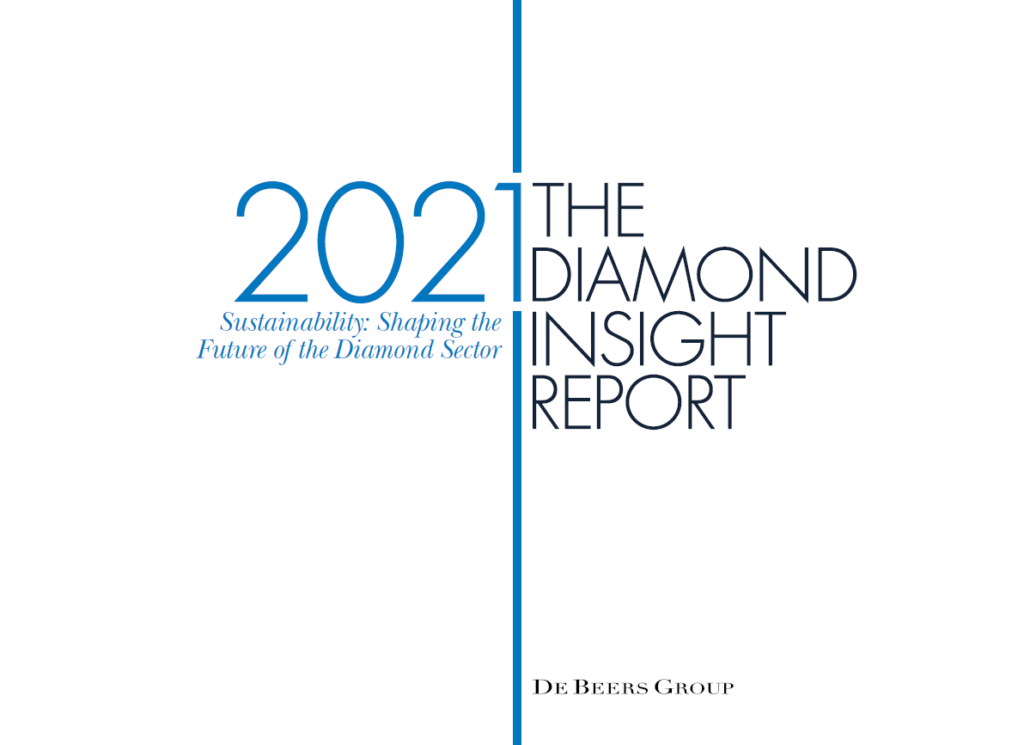
4 October 2021
The artist Gayane Avetisyan receives the Award for Excellence in Technique at the Romanian Jewelry Week
Our President Bernadette Pinet-Cuoq was honored to give the Award for Excellence in Technique to Gayane Avetisyan during the Romanian Jewelry Week on 3 October.
“Mrs Avetisyan is the right association between traditional jewellery technics and enamel, in a very delicate spirit and know-how”, declared Mrs Pinet-Cuoq to explain her choice. The Armenian jeweller started her career by teaching graphic arts, print marking and pottery. She then studied cloisonné enameling in Georgia with local masters. She pursued this passion in Haiti and is now living in Montréal, Canada, where she enrolled in the continuing education programme at the École de Joaillerie of Montreal, specializing in traditional and contemporary art jewelry techniques. During her career, Gayane Avetisyan has been awarded various prizes, celebrating her talent.
The 2021 jury, of which our President took part in, was composed of leading figures in the jewellery sector, and awarded a total of 10 prizes. 191 designers showcased their collections during this 3-day event (30 September-3 October 2021).
More information on the Romanian Jewelry Week: https://www.romanianjewelryweek.com/
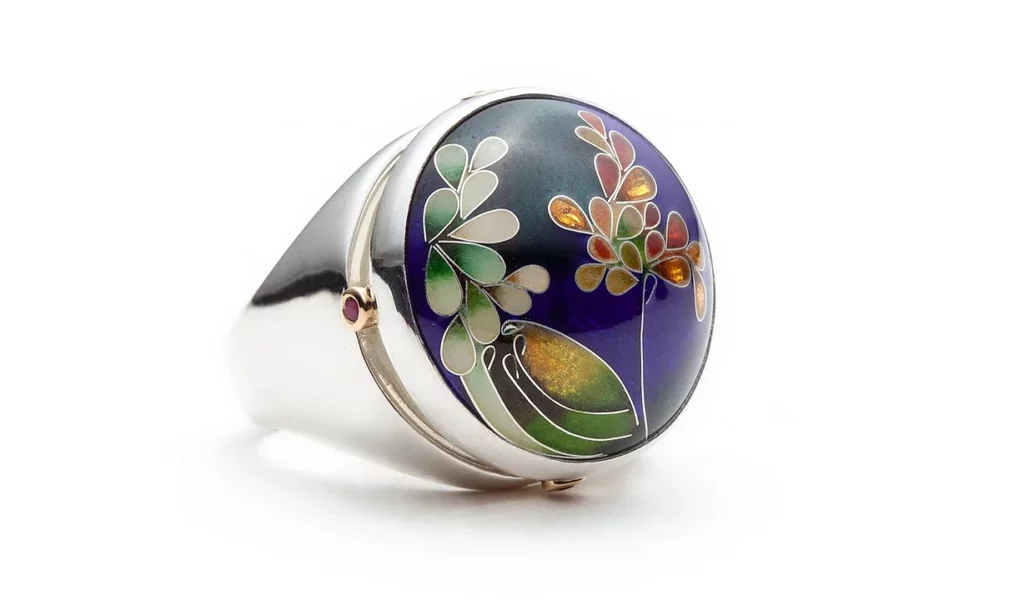
6 September 2021
A lack of clear diamond terminology confuses consumers
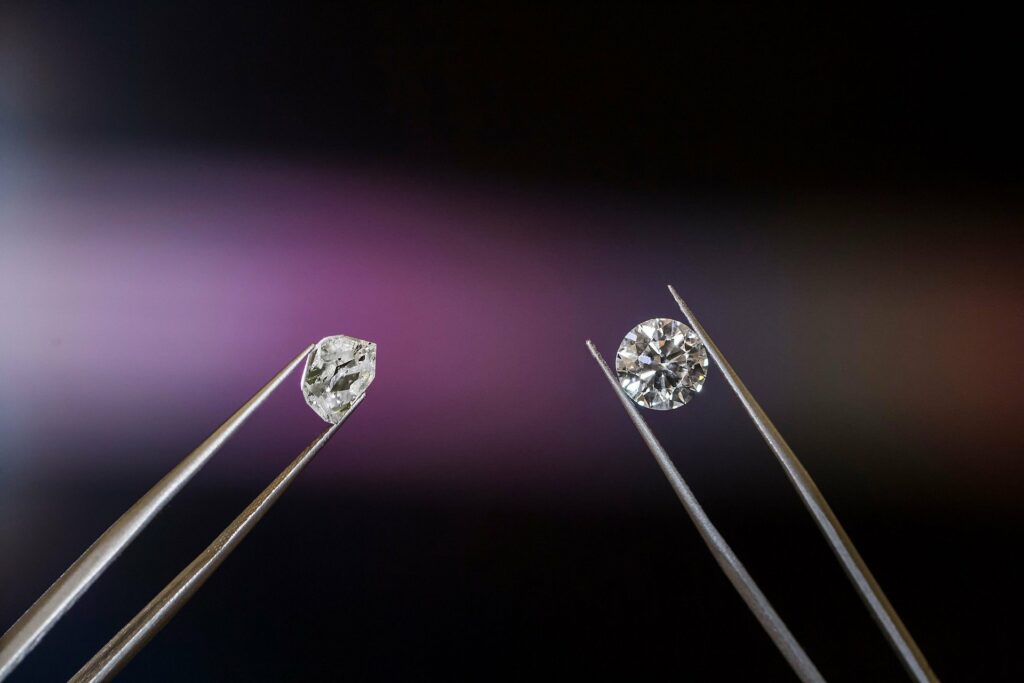
When a consumer enters a jewellery shop looking for diamonds, it might sometimes be complicated to understand exactly what he is purchasing. Indeed, different terms are nowadays used to sell diamonds on the market: ‘natural’, ‘synthetic’, ‘cultured’, ‘laboratory grown’, ‘genuine’ etc.
Do consumers grasp completely the meaning of the various terms used to describe natural and synthetic diamonds? Are consumers duly informed on the product they are buying? To answer this important question, the French Collectif Diamant ordered a survey.
The results of this survey show that consumers have a good knowledge of what a natural diamond is since 81% were able to define the product. The terminology “synthetic diamond” appears to be the most explicit and clearest way to designate artificially produced diamonds. Furthermore, the interviewees made a clear distinction between natural diamonds, which they consider having a high value and synthetic diamonds as having a low value.
One of the challenges is that laboratory-grown diamonds are not always clearly labelled and studies have revealed that misleading terms are used. This is notably the case for the indication “Cultured diamond” which appears to be the most confusing and misleading terminology. More than half of the respondents were not able to provide a definition of this term, and 34% said that it was naturally created. Moreover, this terminology created confusion concerning the value of the diamond.
In addition, the survey reveals that when consumers are well informed about the difference between a natural and a synthetic diamond, it gives them a clear idea of what kind of diamond they want to purchase. It is important to note that young people are the most exposed to frauds because 65% of the 25-34 years old plan to buy a diamond in the future. Moreover, they are the most confused by the different terminologies used. It means that the young generation is the most in need of clear information.
In conclusion, the survey confirms the high risk of confusion about some indications currently used, in particular “cultured diamonds.” Consumers can clearly be victims of disinformation and fraudulent practices. This is why the EFJ advocates for the adoption of an EU legal (or legally binding) definition that would:
- define the characteristics of a natural and synthetic diamond and the fundamental differences between them.
- oblige the trade to accurately inform consumers, by means of a certificate, about the jewellery product they are purchasing.
Read more in our position paper
The OpinionWay study was conducted among 1001 French citizens over the age of 25, within the higher socio-professional categories.
27 August 2021
The EFJ will deliver the Award for Excellence in Technique at the Romanian Jewelry Week
The European Federation of Jewellery is honoured to be part of the jury of the Romanian Jewelry Week 2021 (ROJW). Our President Bernadette Pinet-Cuoq will deliver the Award for Excellence in Technique, recognising exceptional craftsmanship and integration of classical techniques in contemporary jewellery design. As the other members of the jury, she will also make a recommendation for the Grand Award of the Romanian Jewelry Week.
During this 4-days event, other categories will be awarded by members of the Jury who will be composed of leading figures in the jewellery sector: David Sandu (Curator and Founder of ROJW), Charon Kransen (Charon Kransen Arts, New York), Paulo Ribeiro (Director general at JOYA Barcelona Art Jewellery & Objects), Justyna Teodorczyk (Director Of The Gallery Of Art In Legnica, Poland), Byron Vafeiadis (Curator of Education and Collections at Ilias Lalaounis Jewelry Museum) and Enzo Carbone (Founder and CEO of Prodes Italia).
The Romanian Jewelry Week 2021, organised by Assamblage – the International contemporary jewelry association and school in Bucharest -, will celebrate contemporary jewellery from 30 September until 3 October. Over 170 designers from all over the world will gather in Bucharest to present their innovative creations for everyone to enjoy. Fairs, exhibitions, conferences, guided tours… The event will delight jewellery lovers.
More information on the event: https://www.romanianjewelryweek.com/
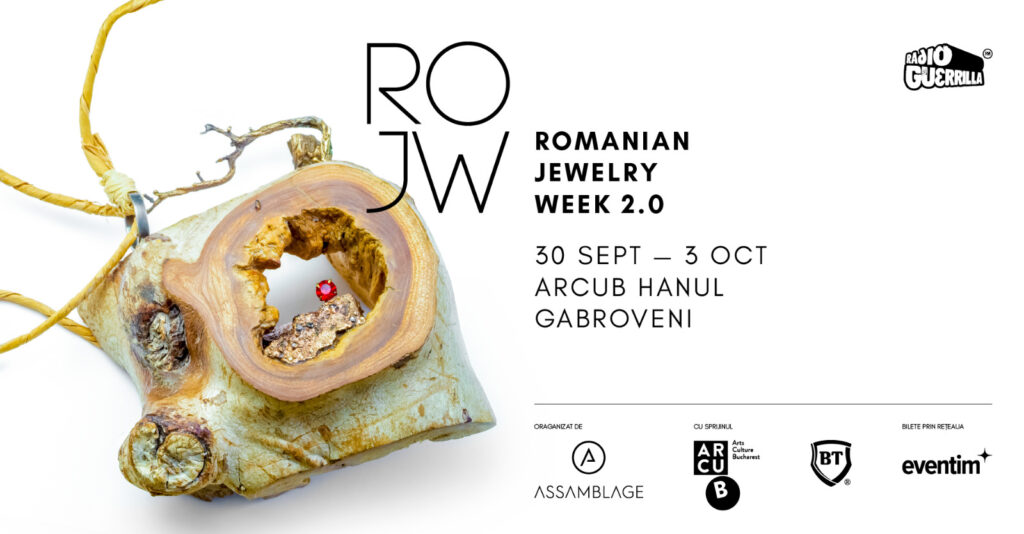
3 August 2021
Slovenian presidency: relevant points for the jewellery sector

On 1 July, Slovenia took over the presidency of the Council of the EU. The priorities of the new presidency are driven by its motto: “Together. Resilient. Europe”.
The presidency programme focuses on four main areas:
- The resilience and recovery of the European Union. A strategically autonomous European Union.
- The Conference on the Future of Europe.
- A union of the European way of life, the rule of law and the same criteria for all.
- A credible and secure European Union. A union that is capable of ensuring security and stability in its neighbourhood.
The EFJ noted some relevant points for the jewellery sector in its programme:
Economic and financial affairs
During the Slovenian presidency considerable work will be devoted to further measures for the prevention of money laundering and terrorist financing, based on the European Commission action plan.
Internal market and industry
– The presidency will strive for as much progress as possible regarding the proposal for Corporate Sustainable Reporting Directive (CSRD), the main goal of which is to improve the reporting of sustainable information of certain large companies and thus target investments at companies striving to address sustainability issues. In the area of company law, work is expected to begin on a legislative proposal related to sustainable corporate governance; this will be an important contribution towards making companies more sustainable development oriented.
– Slovenia will encourage as much progress as possible in implementing the new consumer agenda, which aims to empower consumers to play an active role in the green and digital transition. In this context, Slovenia will negotiate a revision of the Consumer Credit Directive, a Directive on consumer empowerment for the green transition as well as a revision of the General Product Safety Directive, which aim to adapt consumer protection to new societal and technological challenges.
International trade
– The presidency will work to strengthen the EU’s global competitiveness while ensuring open, fair and rule-based international trade with a special focus on SMEs (to avoid an increase of administrative burden) and sustainable development. It will follow the guidelines outlined in the new trade strategy.
– Slovenia will continue to address the most important bilateral, regional and horizontal dossiers in trade and investment policy and strive to strengthen cooperation with like-minded partners. Priority will be given to strengthening the partnership with the United States (addressing climate concerns in particular) and establishing a fairer, rule-based economic relationship with China.
– The Slovenian Presidency will monitor the implementation of existing agreements and work towards progress in the process of signing the agreement with Mexico and Mercosur. It will monitor the ongoing negotiations focusing on Australia and New Zealand and updating the agreement with Chile, and work to deepen cooperation with India and the African continent and African countries. Regarding India, they welcome the work towards an investment agreement.
Access the presidency’s programme: here
20 July 2021
The EU reinforces its anti-money laundering policy
On 20 July, the European Commission published a legislative package proposal to counter money laundering and terrorism financing.
The package is composed of 4 legislative proposals:
- A Regulation establishing a new EU AML/CFT Authority;
- A Regulation on AML/CFT, containing directly-applicable rules, including in the areas of Customer Due Diligence and Beneficial Ownership;
- A sixth Directive on AML/CFT (“AMLD6”), replacing the existing Directive 2015/849/EU (the fourth AML directive as amended by the fifth AML directive), containing provisions that will be transposed into national law, such as rules on national supervisors and Financial Intelligence Units in Member States;
- A revision of the 2015 Regulation on Transfers of Funds to trace transfers of crypto-assets (Regulation 2015/847/EU).
In the second Regulation, the European Commission proposes to establish a harmonised cash payment ceiling of 10.000€. However, the Commission advises to let Member States set a lower limit.
The legislative proposal will now be discussed in the European Parliament and in the Council.
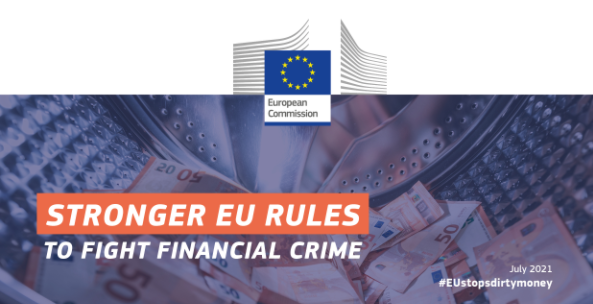
7 June 2021
The diamond value chain:
from the Earth mantle to your jewel
#1: The formation of diamonds, unique creations of the Earth
We are starting a new series on the diamond value chain, from the diamond formation to the ring on your finger. In this newsletter, we will present the essential first step: how are diamonds formed?
Diamonds are a unique creation of the Earth. Their lasting legacy – they were formed deep within the Earth’s crust roughly from 1 to 3 billion years ago – makes them an exceptional natural product.
Made out of pure carbon, their formation requires two important conditions: high temperature (around 1200° C) and high pressure. Under these two conditions only, carbon atoms will start to bond with each other and eventually grow large enough to produce crystals that we can see. Each crystal represents billions and billions of carbon atoms that together form a diamond.
Owing to their exceptional characteristics, diamonds represent beauty, eternity, strength, love and commitment.
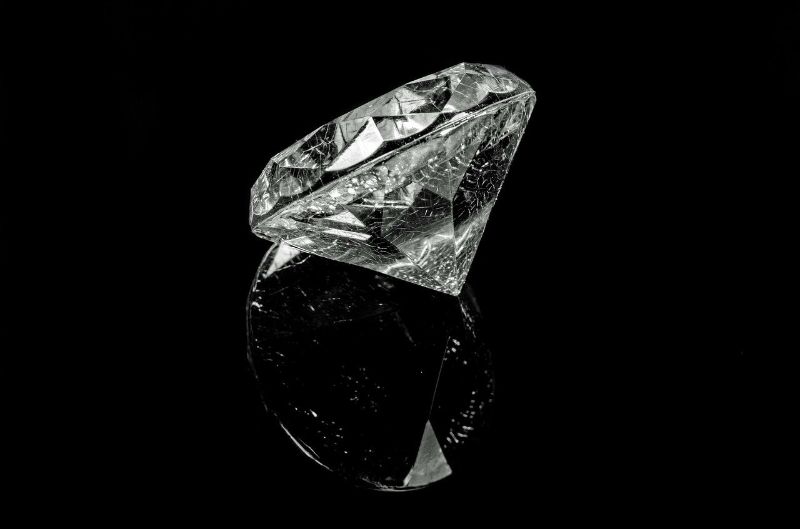
26 May 2021
Read the latest news from the EFJ
Our May newsletter is out! Here is what you can find in this edition:
- Our letter to EU Commissioner McGuiness for an EU harmonised cash payment ceiling
- Our contribution to the EU public consultation on sustainable corporate governance
- The formation of diamonds
- How to improve the system of mutual recognition of goods for the jewellery sector?
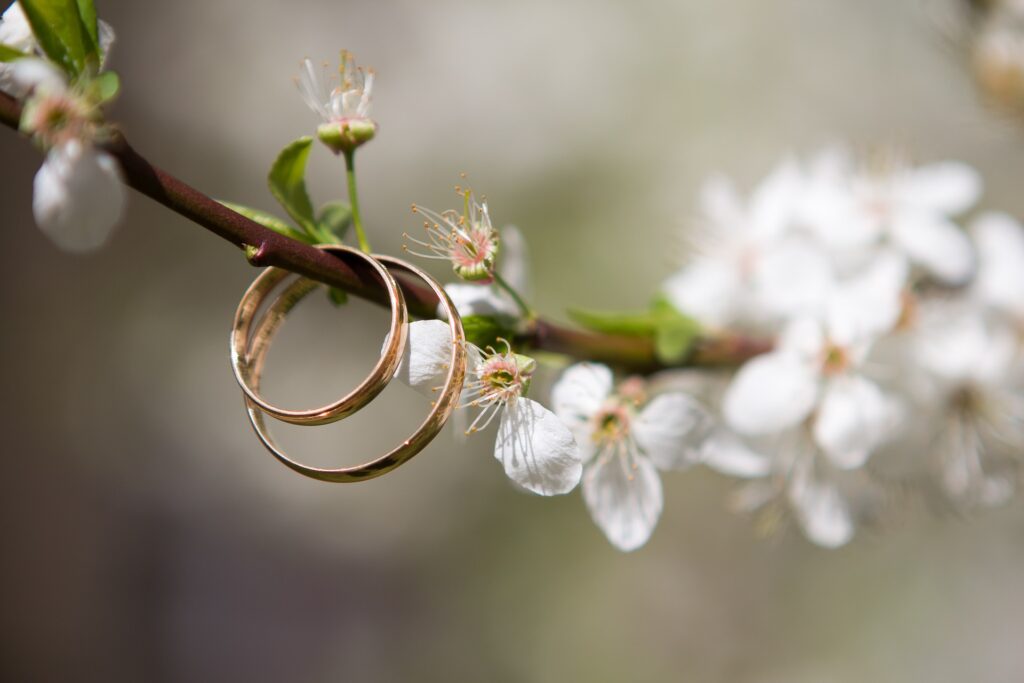
14 April 2021
Letter to EU Commissioner McGuiness: for an EU harmonised cash payment ceiling
The EFJ called Mairead McGuinness, EU Commissioner for Financial services & stability and Capital Markets Union, to integrate the harmonisation of cash payments ceilings in B2C transactions in the future legislative proposal on an EU single rulebook. This crucial measure could help fight money laundering efficiently.
Indeed, the current diverging thresholds existing in the European Union contribute to fueling money laundering by leaving the possibility to ill-intentioned people to choose countries with no cash payment limit to carry out cash transactions. It is worth noting that in the European Union, the range is broad with some countries having limits going from 1000 € to 15.000 € and others having none.
Read our letter to Commissioner Mairead McGuinness
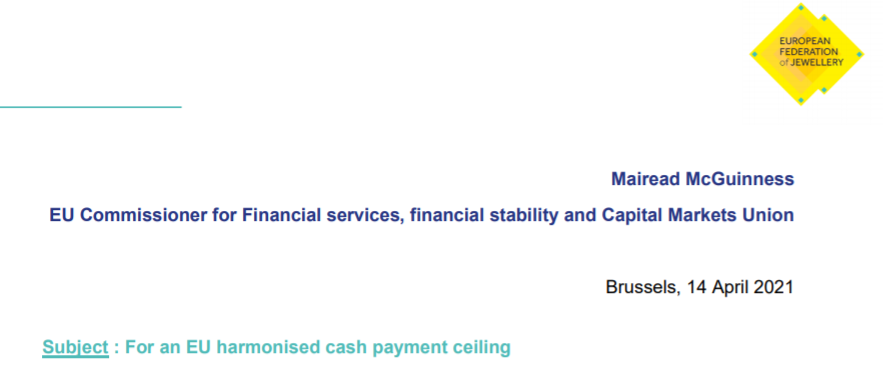
9 April 2021
Towards mandatory due diligence considering the jewellery and diamond sector specificities
Discover our new infographic on due diligence!
We call on the EU Commission to take into consideration the specificities of the jewellery and diamond sector.
Click here to read our position paper on due diligence.
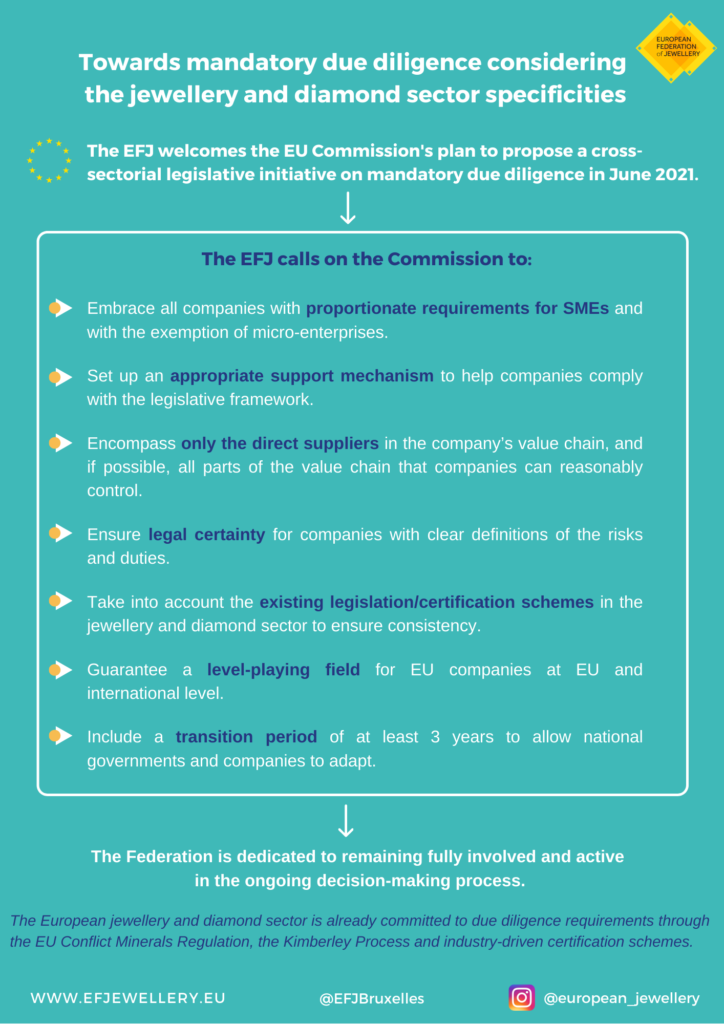
23 February 2021
Mutual recognition of goods: our suggestions to improve the system
The EFJ is participating today in the Commission Expert Group meeting on the accelerated mutual recognition of goods. We are presenting the current barriers preventing the free circulation in the jewellery sector.
Many technical standards are not harmonised between EU countries, such as fineness standards, weight exemptions, soldering, sampling, methods of analysis… and this is slowing down the jewellery trade.
We propose some suggestions to improve the system:
- Member states must accept items produced in compliance with technical standards (ISO/CEN), where possible
- To set up an information exchange system between national inspection bodies to standardise their technical decisions
- The national Assay Offices would have to be mandatorily accredited with ISO 17025
- Only internationally standardized methods of analysis should be recognized for assaying items of precious metals
- The Commission should urge international standardization bodies (ISO/CEN) to produce standards for those aspects (e.g. sampling) which are not yet standardized

9 February 2021
Join the European Federation of Jewellery
Founded in 2013 by members from Belgium, France, Italy and Portugal, the federation aims notably to represent the interests of the European jewellery and gemstones sectors at the EU level, to exchange best practices among the members and to disseminate them among external stakeholders.
The EFJ provides its members with valuable resources designed to help them shape the debate around EU policies that may have an impact on their sector. In this respect, the EFJ keeps close contact with and provides first-hand information to policy-makers on different crucial topics notably due diligence, diamond terminology, anti-money laundering, international trade, and mutual recognition.
Today, the EFJ counts five members: UFBJOP (France), Art Nobilis (Belgium), AWDC (Belgium), Confindustria Federorafi (Italy) and the AORP (Portugal). Together, they represent over 60% of all jewellery articles manufactured and distributed in Europe.
Building on the excellent results achieved in the past years, we would be glad to gather more members. If you are interested, please contact us at melanie.lamaison@alienoreu.com so that we can present the EFJ’s activities and explore the areas of common interest.
You can find more information about the EFJ’s objectives and commitments in the leaflet, or on this website.

4 February 2021
The EFJ contributed to the EU public consultation on Sustainable Corporate Governance
The EFJ’s contribution to the European Commission public consultation on Sustainable Corporate Governance has just been submitted. You can read on our website the updated version of the position paper on mandatory due diligence.
17 December 2020
What are the different steps to make a jewel?
Jewellery is an ancient form of art that evolved through the centuries to become the most elegant and sophisticated expression of beauty. Each jewel is the sum of the technical skills of many different artisans who excel at their profession. The EFJ is committed to protect these different metiers as they embody the essence of European know-how.
Making a jewel is a very cautious process, requiring four different steps. Discover them below:
- Jewellery design: the first step in the creation of beauty
The first step in the creation of a jewel is the design. A jewellery designer is traditionally highly trained in the architectural and functional knowledge of materials, fabrication techniques, composition and market trends. Hand-drawing is the most common method in jewellery design, however, thanks to technological development, new designers are also able to use computer design programs.
In the design phase, all details of the jewel need to be carefully taken into consideration from the materials and precious stones to be used and their characteristics to the number and placement of said stones. The designer is also responsible to draft the marketing strategy for the jewel or the collection and is thus the main link between the production and retail phase.

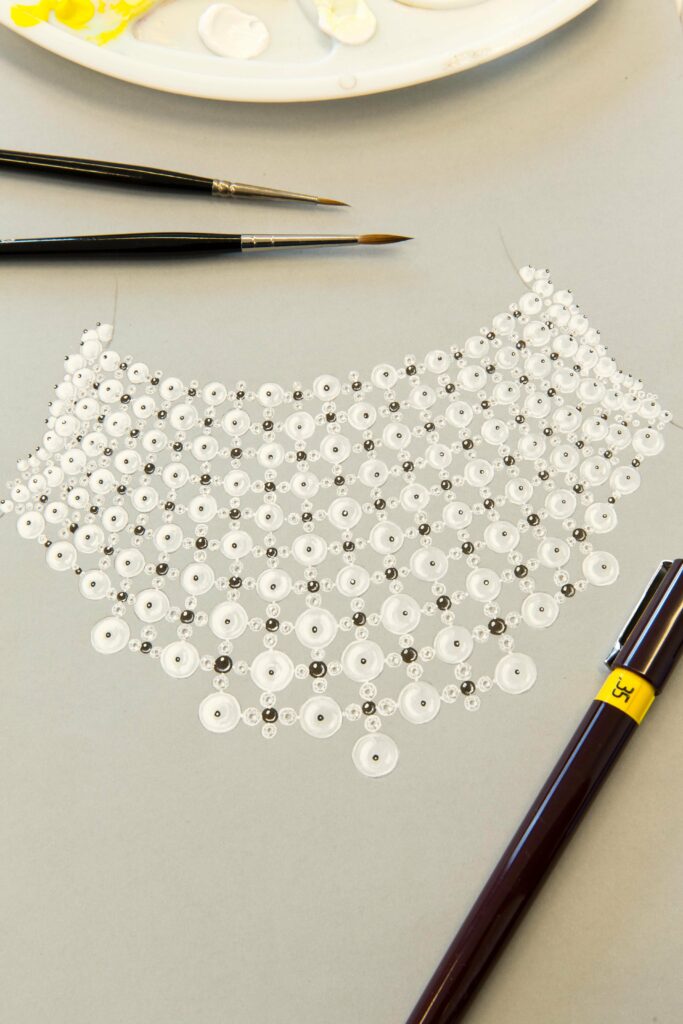
Once the jewel design is finalised, it is time to the manufacturer to turn it into reality…
2. Jewellery manufacturing: flawless jewels from the hands of utmost skilled craftsmen
Once the design is finalised, the manufacturing part begins. This crucial step consists of different stages all executed by highly skilled artisans.
First of all, the sketch is reproduced into a model, usually made of a special jeweller’s wax. However, in recent years this procedure is also being done via 3D printing machines that can quickly create a wax or a resin model. Regardless of the technique used by the manufacturer, the model needs to be perfect in every aspect and many little handmade adjustments are needed to make sure that the final piece will be flawless.
During the final step, the wax model is cast into a precious metal such a gold, silver or platinum. Casting is a very delicate procedure that is usually done by an experienced professional.
At the end of this step, the metal dries into the desired shape and the jeweller can perform the final refinements before other artisans set the precious stones and ensure maximum brilliance through polishing.
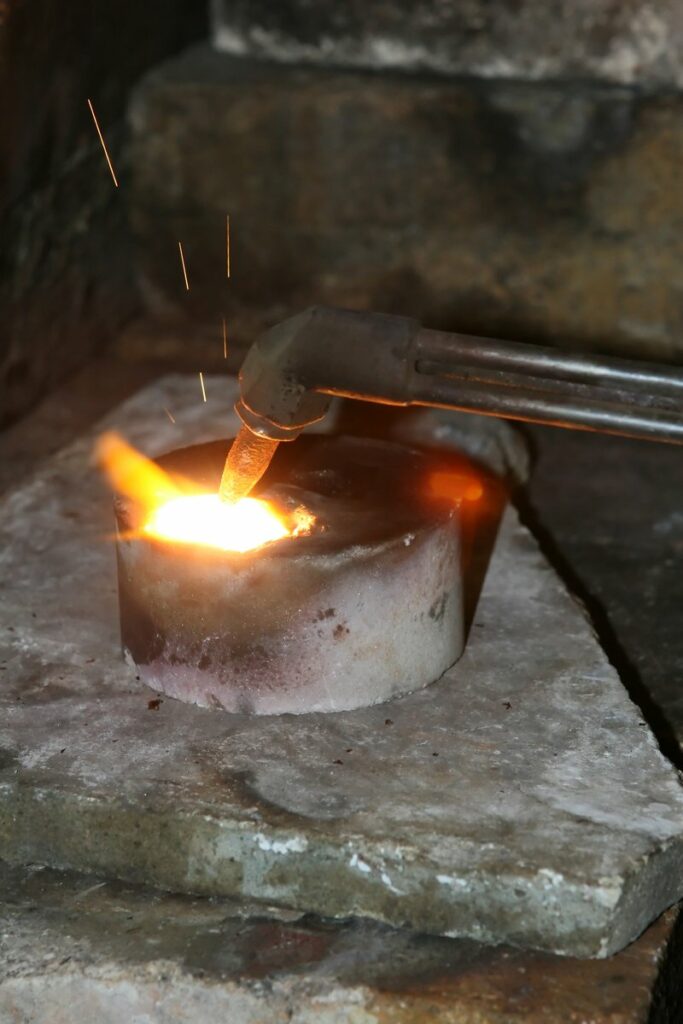
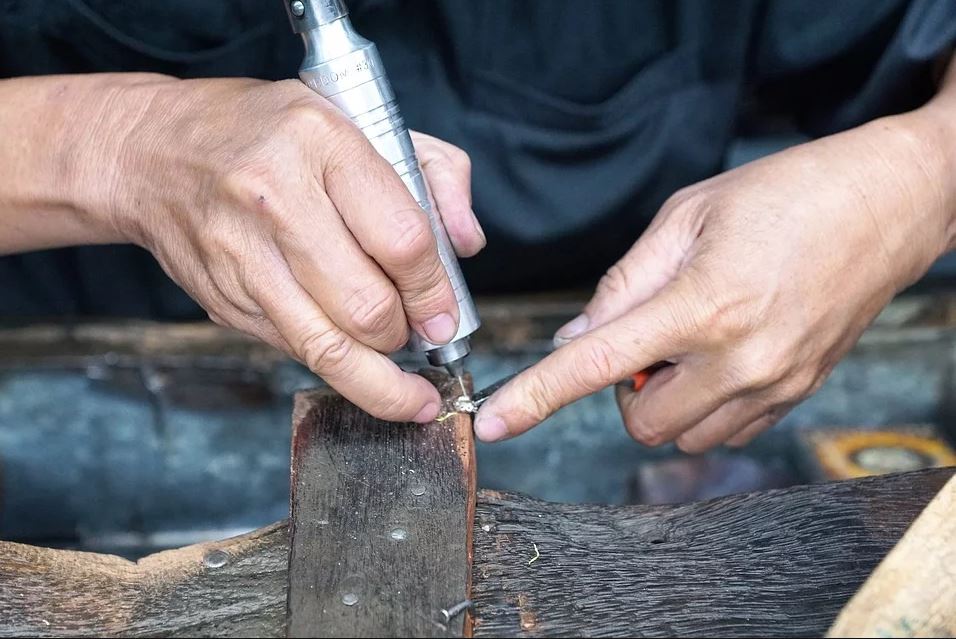
3. The art and techniques of gemstone setting
Once the structure of the jewel is ready, it is time to set the gemstones and this can be done via different techniques depending on the design of the piece and the characteristics of the gems.
The prong setting is one of the most popular stone setting techniques and is commonly used for engagement rings because it allows to show off the gems at best and ensure the maximum sparkle. The prongs are the small metal pieces which keep the stone in place. Solitaire diamond jewels usually have 4 or 6 prongs, but it is possible to realise jewels with only 2 or more than 20 prongs.
The bezel setting is the oldest known technique and in this case, the gemstone is surrounded by a metal border which holds it in place.
In the channel setting, small gemstones are set next to each other in a channel strip and the metal on top is pushed over to keep the gems in place.
The other most popular gemstone setting techniques are the bead setting, the pavè setting and the burnish setting and each of them has different variations.
Gems setting is a complex art performed and handed down by master setters. Their challenging job is to secure the gemstones to the jewel in the least invasive way in order to enhance the design of the jewel as well as the brilliance of the stones.
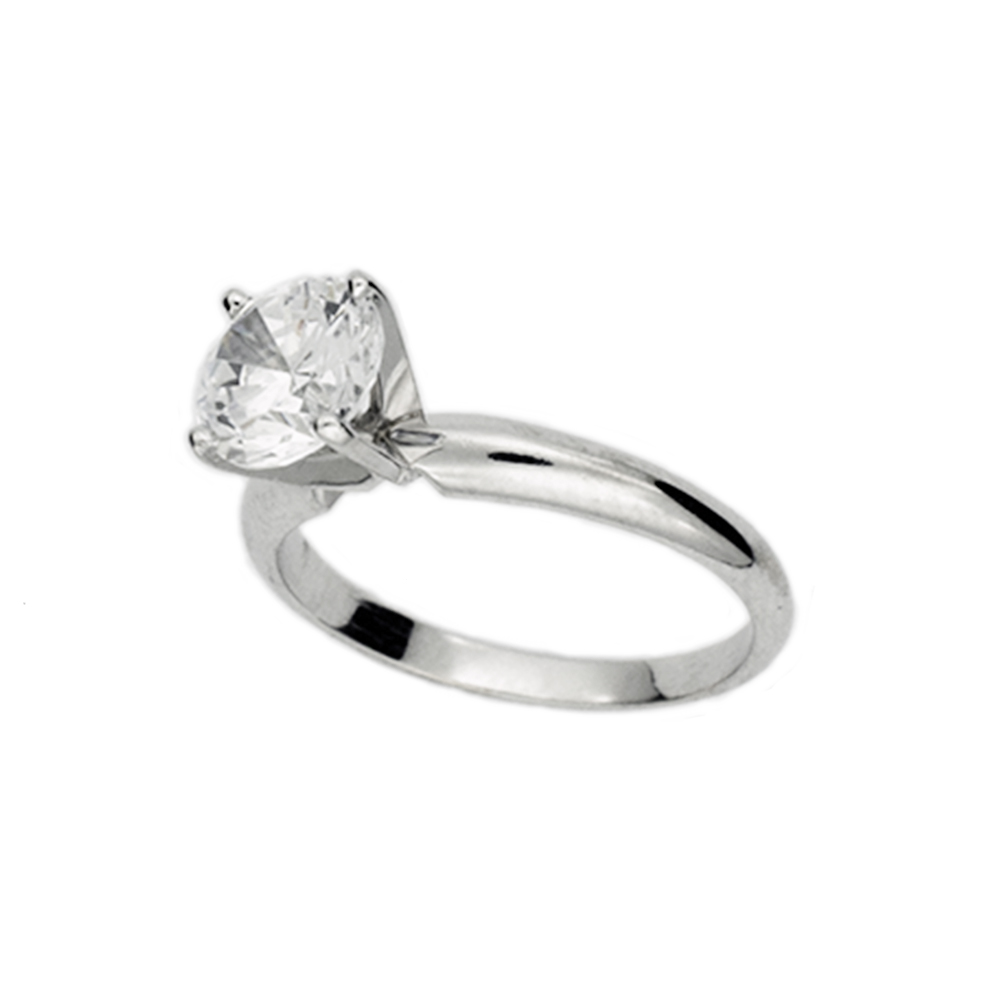
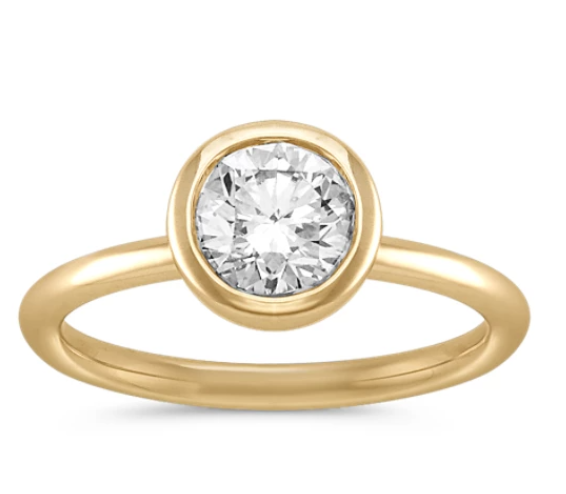

4. Polishing: the final touch
Once your stone is set, your jewel is almost ready to be worn. It still needs to be polished in order to remove uneven or rustic surfaces and make it shine. A great finish can elevate the work to the next level.
The jewel should first be prepared for the polishing phase. Marks, scratches and fire stains should be taken out. Needle files help remove the excess of metal and solder, while sanding will smooth the surfaces. The jewel is now ready to be polished. The tools and techniques for this last step depend on the desired effect and the material.
The polisher is the main tool used by jewellery makers. The discs on the polisher can have many different formats. This very precise technique requires much attention, if the jewel is not put on the right spot, it might be severely damaged.
A second technique is to use polishing compounds which have minuscule abrasive particles held together in a binder. There are many kinds of these compounds which can be applied with a brush.
The barreling machine or barrel polisher consists of a barrel shaped container which sits on top of a motor and is rotated. The jewellery pieces are placed inside the barrel, with steel shot, water, and barreling solution. The barrel rotation will polish the jewels.
After the designing, manufacturing, gemstone setting and polishing, the jewel is now ready to be worn!
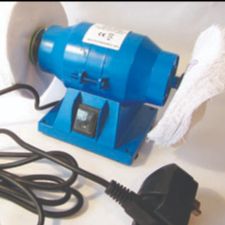


15 December 2020
Our December newsletter is out!
We just sent out our December newsletter! Discover more on:
- Our contribution to the New EU Consumer Agenda
- A call for a harmonised cash payment ceiling
- Our position on mandatory due diligence
- The jewel polishing phase
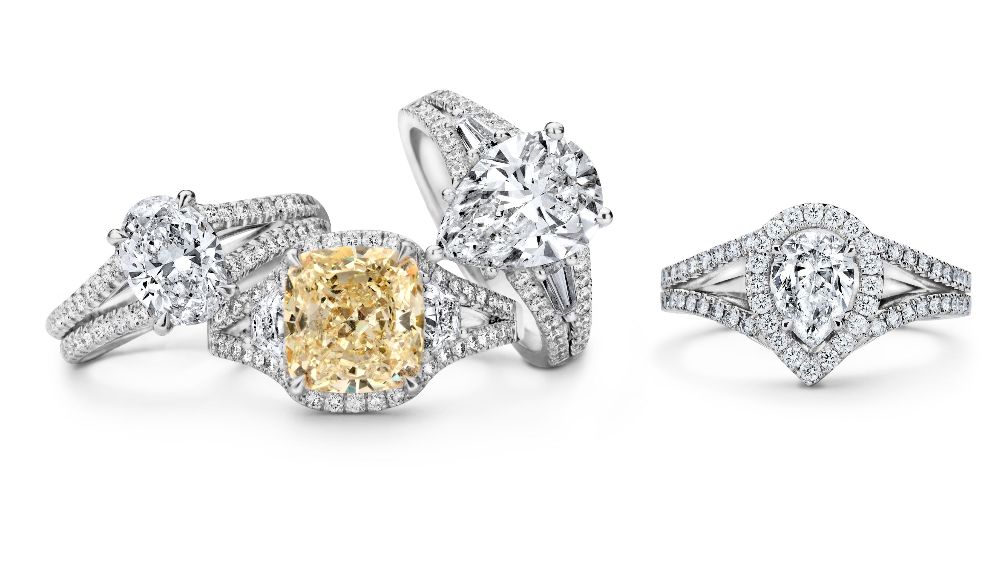
9 october 2020
Our contribution to the new EU consumer agenda: the case of diamond terminology
On the 6th of October, the European Federation of Jewellery sent its contribution to the European Commission on the consultation on the New EU Consumer Agenda. The EFJ is committed to contributing to the current reflection of the European Commission in order to shape an ambitious European consumer policy up to today’s challenges and wishes to flag the issue of diamond terminology in this position paper.
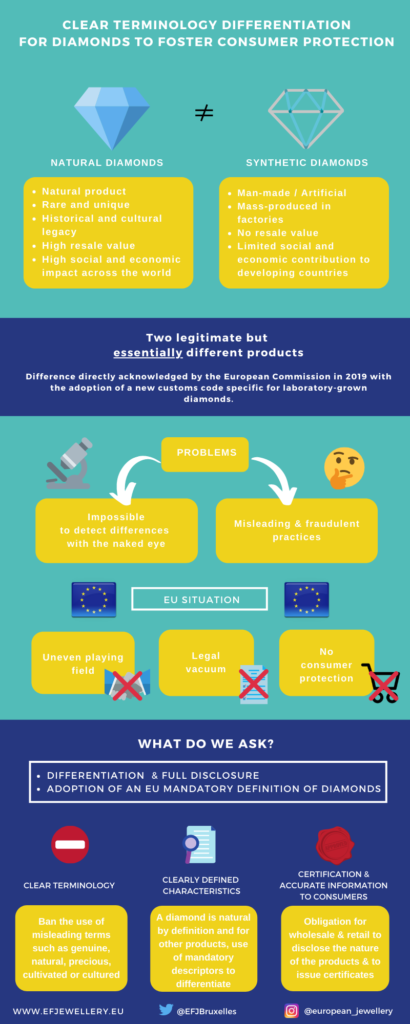
2 October 2020
Our infographic on cash payments is out!
The EFJ urges the European Commission to put forward an EU initiative aimed at harmonising the limits for cash payments in business-to-consumer transactions by proposing a proportionate ceiling which takes into consideration the different necessities and sensibilities of EU citizens.
See our infographic to understand our position:
8 September 2020
New position paper on mandatory due diligence
On the 29th of April, Didier Reynders, European Commissioner for Justice, announced to the European Parliament Responsible Business Conduct Working Group that the European Commission plans to propose a legislative initiative on mandatory due diligence in 2021. Commissioner Reynders further specified that the legislation will be cross-sectorial and will include enforcement mechanisms to ensure compliance and access to justice for the victims.
The European Federation of Jewellery (EFJ) supports the idea of an EU-wide cross-sectorial legislative framework on due diligence and is ready to take a proactive role in the decision-making process.
Read our entire position paper here
6 July 2020
We just sent out our July newsletter!
Want to know more on diamond terminology, the COVID-19 impact on the jewellery sector, or the first online diamond trade show?
26 June 2020
Why should there be a clear terminology differentiation between natural and laboratory-grown diamonds ?
The European Federation of Jewellery calls on the European Commission to develop a legislative proposal aiming to differentiate natural diamonds and synthetic diamonds and to ensure consumer protection through full product disclosure at both customs and retail level.
Our infographic tells you why:
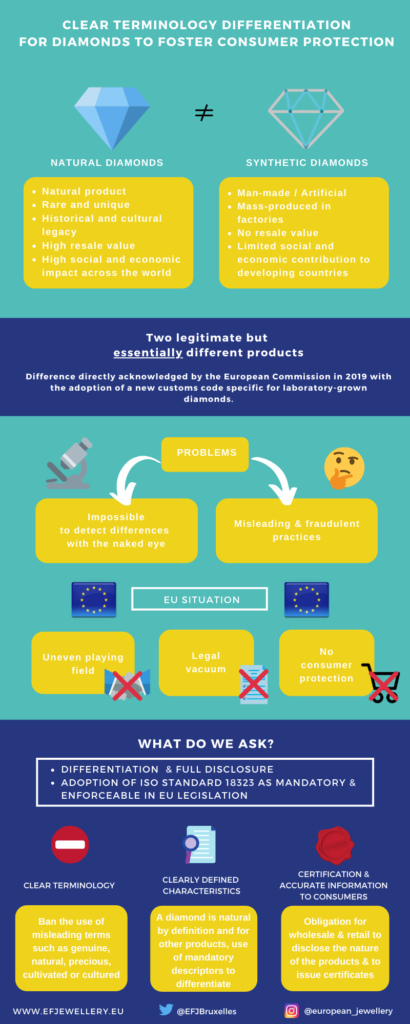
25 November 2019
Launch of Due Diligence Ready!
Programme to support your minerals and metals supply chain due diligence efforts

The European Federation of Jewellery welcomes the launch of Due Diligence Ready!, a new European Commission online tool that will benefit your company.
Due Diligence Ready! is dedicated to small and medium-sized enterprises (SMEs) with minerals and metals in their supply chains, notably tin, tantalum, tungsten and gold. Available in 7 languages, it helps SMEs perform due diligence effectively and ensure responsible sourcing. For those of you impacted by regulatory requirements, for example by the EU’s ‘conflict minerals’ regulation which will enter into force on 1 January 2021, the initiative will help you comply with your legal obligations.
Via the Due Diligence Ready! online portal, you can access materials to guide you through conducting your due diligence in a simple and efficient way, including:
- A series of educational webinars, breaking down key concepts
- ‘Frequently Asked Questions’
- A glossary of terms
- A toolbox of useful resources related to due diligence
We encourage you to make good use of the Due Diligence Ready! portal. This will place you in a stronger position to comply with legal requirements, meet market demand and consumers’ expectations for responsible sourcing in minerals and metals.
Follow the initiative on Twitter, LinkedIn, Facebook
The European Federation of Jewellery contributed to the creation of the Due Diligence Ready! platform as the Federation was a member of the Advisory Board set up by the European Commission.
12 November 2019
Entry into force of the new European customs code for synthetic diamonds
The European Federation of Jewellery (EFJ) welcomes the publication of the new European customs code for synthetic diamonds. This code, introduced in the European combined nomenclature (Chapter 71), will enter into force as from 1st January 20201. It will be applied until 1st January 2022, when the HS6 customs code, which was recently adopted by the World Customs Organisation (WCO), will be applied at the European level.
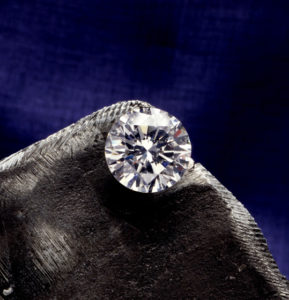 The EFJ and its membership strived for the adoption of this new European customs code, which will facilitate the monitoring of synthetic diamond flows in Europe, thus allowing better compliance with the Kimberley Process Certification Scheme.
The EFJ and its membership strived for the adoption of this new European customs code, which will facilitate the monitoring of synthetic diamond flows in Europe, thus allowing better compliance with the Kimberley Process Certification Scheme.
Although legitimate, synthetic diamonds fundamentally differ from natural diamonds. The EFJ therefore welcomes the acknowledgement of the difference between natural diamonds and synthetic diamonds by the European Commission through the new customs code. Given these fundamental differences, the EFJ deems it essential as well to legally oblige retailers to duly inform consumers about the nature of the product they are selling. The EFJ will therefore continue to advocate the establishment of a European legislation differentiating natural diamonds from synthetic diamonds at retail level in order to ensure consumer protection through full product disclosure.
25 October 2019
Constructive MEPs support the policy priorities of the EU jewellery sector
“We had fruitful meetings with many MEPs willing to respond to the challenges of the European jewellery sector” declared Bernadette Pinet-Cuoq, President of the European Federation of Jewellery (EFJ). At the beginning of this term, these challenges are numerous: diamond terminology, mutual recognition, international trade, harmonisation of cash payment thresholds and sustainable value chains for minerals.
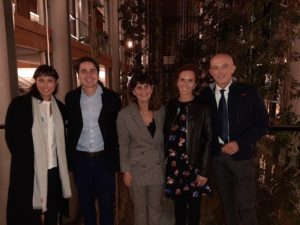
A delegation of the EFJ had the opportunity to meet more than 20 MEPs from different political groups in order to engage with them and to inform them on the way the European diamond and jewellery business is structured.
Establishing European legislation that clearly differentiates natural diamonds from synthetic diamonds, thereby protecting consumers by obliging retailers to unambiguously disclose the nature of the jewellery products they are selling, will be the Federation’s top priority in 2020. Significant steps to enhance consumer protection within the EU have already been taken with the New Deal for Consumers under the Juncker Commission. Since 40 million Europeans have indicated to have voted in the EU elections because of the importance they attach to consumer protection policies, the EFJ hopes that this subject will remain high on the agenda of the European institutions.
Strengthening the EFJ by welcoming new members from countries with an active jewellery industry is another priority objective, as this would allow the EFJ to speak with an even louder voice towards European decision-makers.
The members of the Federation will meet for the next EFJ General Assembly in spring 2020 in Milan, the Italian capital of design and artistic creation.
The European Federation of Jewellery mobilised and ambitious in this year of European elections
The General Assembly of the European Federation of Jewellery (EFJ) took place in the prestigious setting of the buildings of the French Union of Jewellery, Silverware, Stones and Pearls (UFBJOP) in Paris on the 1st of April. An exciting visit to the Haute École de Joaillerie (Higher School of Jewellery Arts) opened this day full of discussions. A few figures suffice to show the history and fame of the oldest jewellery establishment in the world: 151 years of existence, 600 students and 12 workshops.
Under the auspices of Bernadette Pinet Cuoq, President of the UFBJOP and EFJ, the discussions allowed for further reflection about the full application of the mutual recognition principle for European jewellery products. Such an application would significantly facilitate the free circulation of jewels throughout the European Union.
International trade was another topic. The EFJ reaffirmed the importance of maintaining an open European trade policy towards third countries and is currently working to identify the main tariff and non-tariff barriers that prevent the European jewellery sector from reaching 60% of consumers in the world.
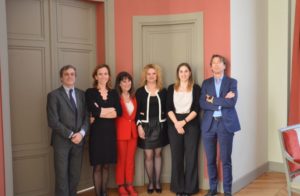
2019 will also signify a year of change, as the European elections will substantially modify the political landscape. The EFJ will be equal to this challenge with the development of a new awareness and communication strategy. The members of the Federation will notably meet the newly elected Members of the European Parliament in October in Strasbourg.
At the dawn of the advent of a new European Parliament and a new Commission, the EFJ remains more mobilised than ever. “The European jewellery sector is faced with a growing number of challenges. We decided today to include the issue of synthetic diamond in our mandate. The EFJ will advocate for the implementation of a specific customs code to differentiate synthetic diamond from natural diamond.” concluded Ms. Pinet Cuoq.
Successful day of meetings with EU policy-makers in Brussels
The critical priorities of the European jewellery sector were at the centre of several meetings held on the 21st of February 2018 between a delegation of the European Federation of Jewellery (EFJ) and several European Commission’s representatives.
This second successful day of bilateral meetings covered a broad range of topics, notably conflict minerals, international trade, cash payments and synthetic diamonds.
In particular, the Federation reiterated its willingness to closely cooperate with European and international Institutions to proceed with a swift implementation of the Conflict Minerals Regulation and to make sure that SMEs can easily adapt to the new rules.
Moreover, during several meetings with different representatives of DG Trade, the EFJ stressed that the economic growth of the sector is severely hampered by obstacles to free trade and especially by the persistent tariff and non-tariff barriers applied by third countries on EU jewellery products. In the respect, the Federation encouraged the Commission to maintain its ambitious commercial policy in order to improve the EU access to key foreign markets.
The Federation had also a second exchange of views with DG ECFIN regarding a potential harmonisation of cash payment limits at the EU level. Finally, they put forward some proposals to DG Justice to tackle the challenge of the increasing production of synthetic diamonds.
The fruitful meetings confirmed the EFJ commitment to become a proactive and trusted actor on the European scene and allowed more in-depth exchanges on crucial themes.
The EFJ publishes a new position paper on limits in cash payments
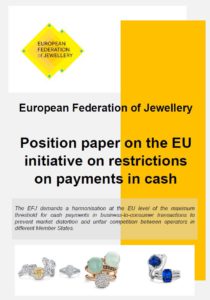
The European Federation of Jewellery (EFJ) published a new position paper on limits in cash payments to feed into the debate around the EU initiative on restrictions on payments in cash launched by the European Commission last year.
The EFJ position paper highlights several issues related to the lack of harmonisation of cash payment limits at EU level. The most notable concern for the sector is the different maximum thresholds for cash payments in business-to-consumer transactions. Moreover, cash restriction limits often differ also within the Member States creating unjustified discriminations between residents and non-residents. These differences lead to a lack of equal level playing field and generate unfair competition between EU Member States, which goes against the EU Internal Market principles.
The EFJ paper also underlines that cash remains the preferred form of payments in the Euro area because it protects the users’ privacy and personal data, it is universally accepted, costless and flexible. Moreover, cash allows the immediate closure of payments while electronic transactions might be cancelled and are more exposed to external constraints such as technical problems or hacking.
With this position paper, the EFJ urges the European Commission to put forward an EU initiative aimed at harmonising the limits for cash payments by proposing a proportionate threshold which takes into consideration the different necessities and sensibilities of EU citizens.
The position paper can be downloaded here.
The EFJ meets with representatives of the European Commission

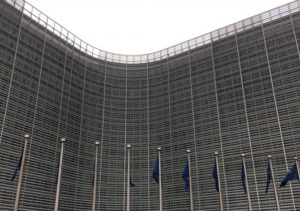
On the 21st of April, a delegation of the European Federation of Jewellery (EFJ), headed by its President, Bernadette Pinet Cuoq, had a series of successful meetings with several representatives of the European Commission. The objectives were to raise awareness about the sector and its main challenges as well as to exchange on several key issues: COSME, the European support programme for SMEs, the EU policies in favour of creative industries, conflict minerals, market access and opening of third countries’ markets and cash payment limits.
Regarding the implementation of the newly adopted EU conflict minerals regulation, the EFJ reiterated its commitment to work with the European Commission, the OECD and the other stakeholders to enhance the due diligence responsibilities of its members.
An ambitious and proactive approach was also defended during the high level meeting with the Cabinet of Pierre Moscovici, Commissioner for Economic and Financial Affairs. The EFJ advocated the adoption of a European harmonisation of cash payment thresholds in order, notably, to achieve a level playing field between the economic actors on the European territory.
The representatives of the European Commission welcomed warmly the EFJ and were happy to get information on this high value sector. This first day of fruitful meetings set the foundation for a deeper involvement of the Federation in the European scene.
_______________________________________________________________________

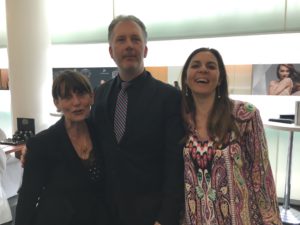
L’EFJ s’est réunie à l’occasion de la foire de Bâle sous la Présidence de Madame Bernadette Pinet Cuoq, en présence de Fatima Santos, Secrétaire générale AORP, de Monsieur Jan Orye, Président d’Ars Nobilis et avec la participation de Madame Licia Mattioli, membre de la Cofindustria et de Monsieur Charles Chaussepied, Vice-Chair du Responsible Jewellery Council.
L’EFJ a eu le plaisir d’accueillir un nouveau membre, Monsieur Cédric Berruex, représentant de l’Association Romande des Métiers de la Bijouterie, et de valider le plan d’action pour les semaines à venir avec les rencontres.
_______________________________________________________________________
EFJ position paper on international trade
Access the position paper here.
